6 The Roaring Twenties
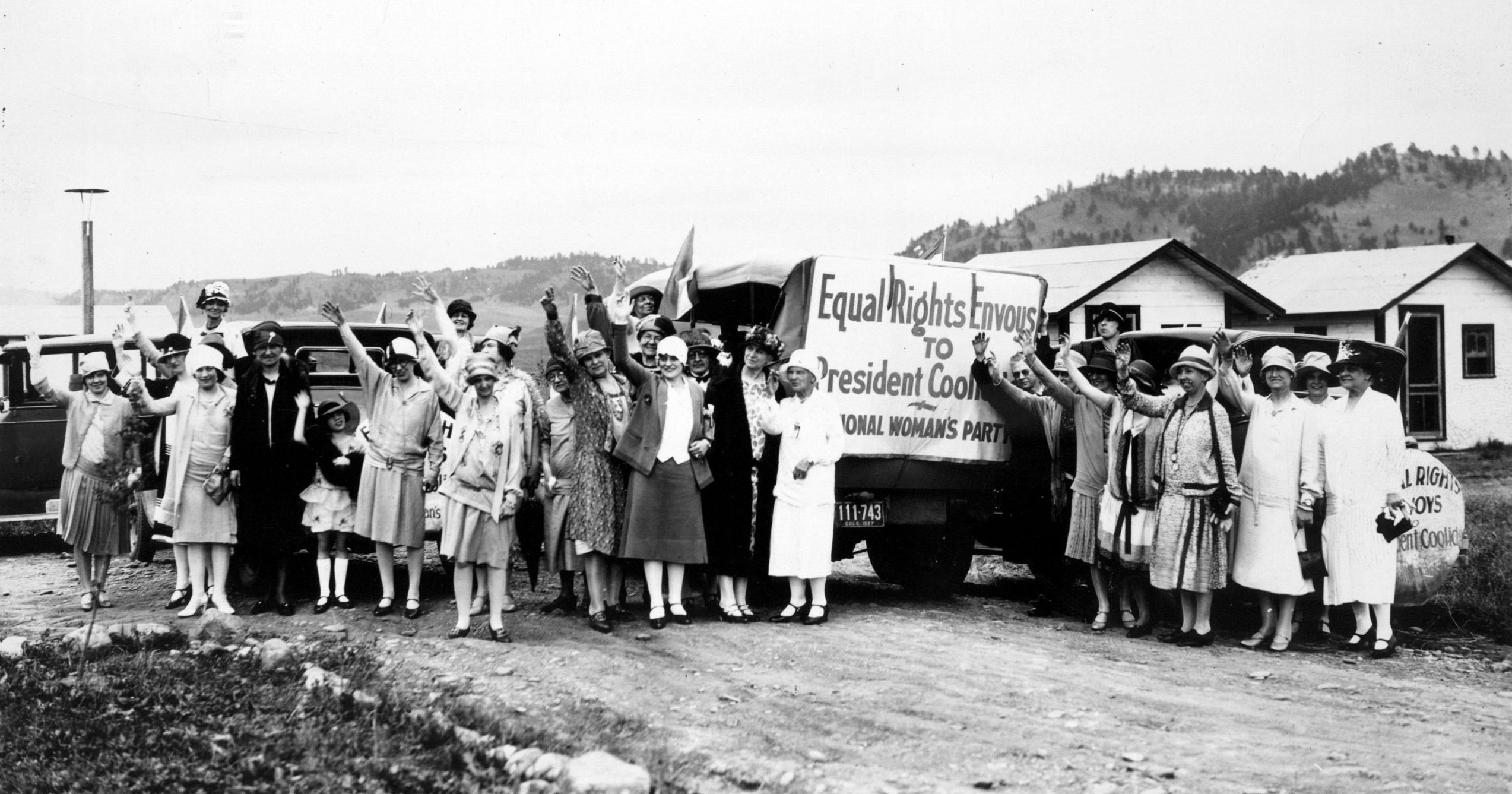
The 1920s would be anything but “normal.” The decade so reshaped American life that it came to be called by many names: the New Era, the Jazz Age, the Age of the Flapper, the Prosperity Decade, and, most commonly, the Roaring Twenties. The mass production and consumption of automobiles, household appliances, film, and radio fueled a new economy and new standards of living. New mass entertainment introduced talking films and jazz while sexual and social restraints loosened. But at the same time, many Americans turned their back on political and economic reform, denounced America’s shifting demographics, stifled immigration, retreated toward “old-time religion,” and revived the Ku Klux Klan with millions of new members. On the other hand, many Americans fought harder than ever for equal rights and cultural observers noted the appearance of “the New Woman” and “the New Negro.” Old immigrant communities that had predated new immigration quotas, meanwhile, clung to their cultures and their native faiths. The 1920s were a decade of conflict and tension. Whatever it was, it was not “normalcy.”
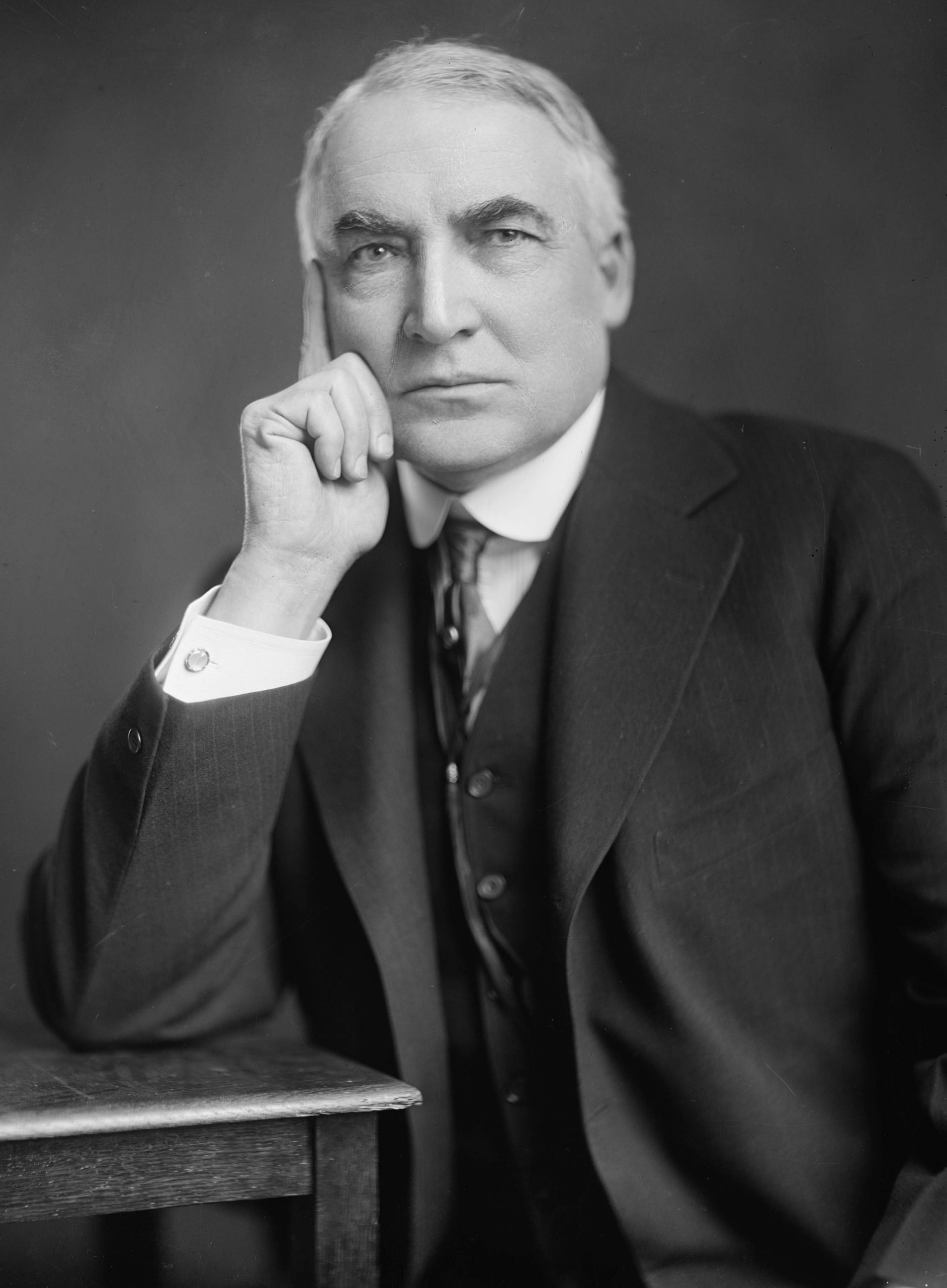
On a sunny day in early March 1921, Warren G. Harding took the oath to become the twenty-ninth president of the United States. A former newspaper editor who had entered politics in 1900 as an Ohio state senator and lieutenant governor before becoming the junior U.S. senator for Ohio, Harding had won a landslide election by promising a “return to normalcy.” The Republican Party had planned to nominate Theodore Roosevelt for the presidency in 1920. Roosevelt had been critical of Woodrow Wilson’s Fourteen Points, and was expected to be a strong candidate given his continued popularity and a promised platform including old-age pensions for workers, government insurance for sickness and unemployment, public housing programs for low-income families, reduction of work hours, aid to farmers, and greater regulation of large corporations. Roosevelt wrote to a friend that “I wish to do everything in my power to make the Republican Party the party of sane, constructive radicalism, just as it was under Lincoln.” But the former president died unexpectedly in January 1919 of a coronary embolism. Lacking a compelling candidate to replace Roosevelt, the party decided to nominate Harding in a back-channel negotiation style that became known as the “smoke-filled room”. Democrats accused the party of putting forward a “weak and mediocre” candidate who “never had an original idea.” William Randolph Hearst’s papers called Harding the “flag-bearer of a new Senatorial autocracy” and the New York Times described Harding as a “very respectable Ohio politician of the second class.” Harding won partly because the Democrats also chose a mediocre Ohio politician, Governor James M. Cox, as their candidate (although they did pick Assistant Secretary of the Navy Franklin D. Roosevelt as his running-mate).
Question for Discussion
- Why did the promise to return America to “normalcy” resonate with voters?
“Our supreme task is the resumption of our onward, normal way,” Harding declared in his inaugural address. Two months later, he elaborated on this theme, saying “America’s present need is not heroics, but healing; not nostrums, but normalcy; not revolution, but restoration.” While critics described Harding’s oratory as “an army of pompous phrases moving over the landscape in search of an idea,” the idea of returning America to normal resonated with the people. The nation had been hit with a series of shocks including World War I, the influenza pandemic which caused as many as 675,000 American deaths, a lingering “Red Scare” sparked by the Bolshevik Revolution in Russia, and the explosion of racial violence that began in the “Red Summer” of 1919 and continued in 1921 with the Greenwood Massacre in Tulsa Oklahoma.
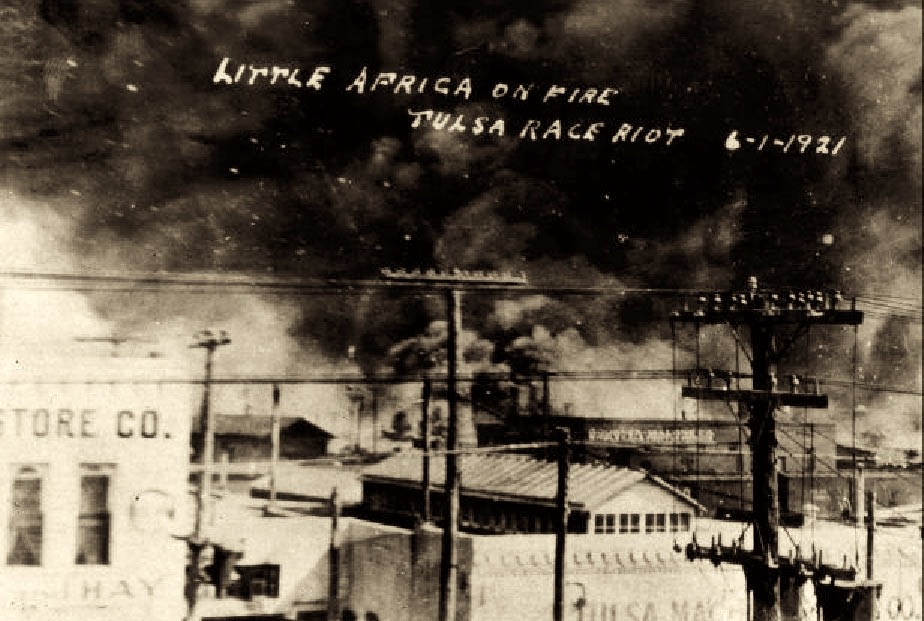
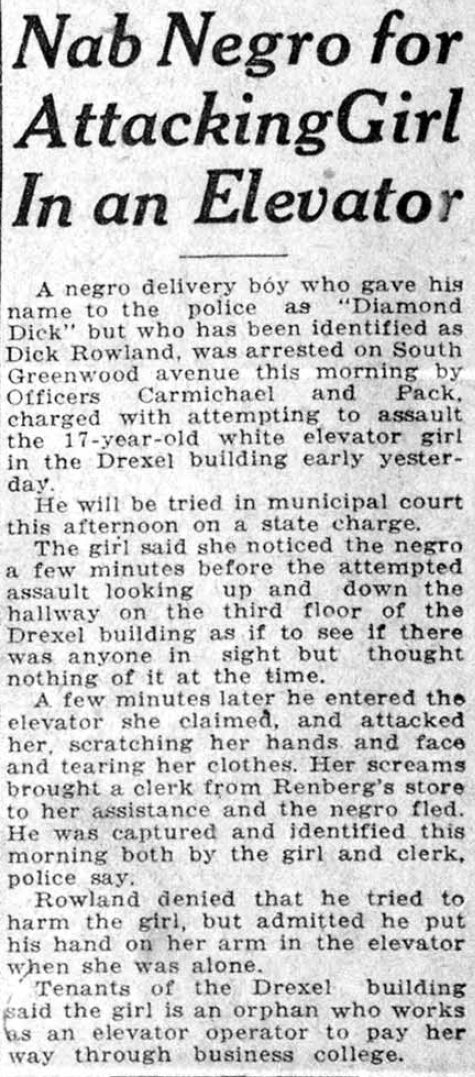
In 1921 Greenwood was one of the most affluent and commercially successful black communities in America. Originally attracted by the Oklahoma oil boom, black workers, merchants, and professionals built a thriving business district that Booker T. Washington called the “Negro Wall Street”. Although they made up only about an eighth of the population, African Americans prospered in Tulsa. The violence began when a 17-year old white woman ran out of an elevator in a public building and claimed a 19-year old black shoe shiner named Dick Rowland had sexually assaulted her. Rowland was arrested by the county sheriff and newspapers picked up the story, running headlines announcing “To Lynch Negro Tonight” and “Nab Negro for Attacking Girl in Elevator.” A group of armed black citizens including several black business leaders arrived to prevent a lynch mob from taking Rowland from the jail. Shots were exchanged when the lynch mob arrived and tried to disarm the blacks defending Rowland, resulting in ten white and two black deaths.
As news of this fight spread, white rioters attacked Greenwood in force overnight and into the following day. Stores and homes were looted and set on fire. When Tulsa firefighters arrived, they were turned away by white vigilantes. A number of eyewitness accounts described private aircraft being used to shoot into black crowds and drop turpentine firebombs onto black-owned buildings. The death toll is uncertain, but probably amounted to several hundred black deaths and up to a hundred white. About 6,000 Greenwood residents were arrested and briefly detained. Nearly a hundred people were indicted but no one was prosecuted for the riots. The Red Cross reported that 1,256 homes were burned and an additional 215 looted. About 10,000 people were left homeless.
Question for Discussion
- Why does the Greenwood Massacre not typically get taught in US History?
To deliver on his promises of stability and prosperity, Harding signed legislation to restore a high protective tariff and dismantled the last wartime controls over industry. Meanwhile, the vestiges of America’s involvement in World War I and its propaganda and suspicions of anything less than “100 percent American” pushed Congress to address fears of immigration and foreign populations. A postwar recession allowed elites to raise the specter of the Russian Revolution and sideline not just American socialist and anarchist organizations but nearly all union activism. During the 1920s, the labor movement suffered a sharp decline in memberships. Workers lost not only bargaining power but also the support of courts, politicians, and the American public.

Harding’s presidency would go down in history as among the most corrupt. Some of Harding’s cabinet appointees were competent administrators that answered to various American constituencies. For instance, Henry C. Wallace, the vocal editor of Wallace’s Farmer and a well-known proponent of scientific farming, was secretary of agriculture. Herbert Hoover, the popular head of the wartime Food Administration and a self-made millionaire, was secretary of commerce. To satisfy Wall Street, the conservative Pittsburgh banker Andrew Mellon became secretary of the treasury. Mostly, however, it was the appointing of friends and close supporters, dubbed “the Ohio gang,” that led to trouble.Harding’s administration suffered a tremendous setback when several officials conspired to lease government land in Wyoming to oil companies in exchange for cash. In a scandal known as the “Teapot Dome” after a Wyoming rock formation that resembled a teapot, interior secretary Albert Fall and navy secretary Edwin Denby were eventually convicted and sent to jail. Harding took vacation in the summer of 1923, intending to think deeply on how to deal with his “God-damned friends”. It was Harding’s friends, and not his enemies, that kept him up walking the halls at nights. But then, in August 1923, Harding died suddenly of a heart attack and Vice President Calvin Coolidge ascended to the highest office in the land.
The son of a Vermont shopkeeper, Coolidge had climbed the Republican ranks from city councilman to governor of Massachusetts. As president, Coolidge sought to remove the stain of scandal but otherwise continued Harding’s economic approach, refusing to take actions in defense of workers or consumers against American business. “The chief business of the American people,” the new president stated, “is business.” One observer called Coolidge’s policy “active inactivity,” but Coolidge was not afraid of supporting business interests and wealthy Americans by lowering taxes or maintaining high tariff rates. Congress, for instance, had already begun to reduce taxes on the wealthy from wartime levels of 66 percent to 20 percent, which Coolidge championed. Government spending had been cut back substantially since the end of the war, and by 1927 only the wealthiest 2% of Americans paid any federal income taxes. In addition to business, Coolidge supported civil rights and racial tolerance. In his first state of the union message he said African Americans’ Constitutional rights were “just as sacred as those of any other citizen” and that it was a “public and a private duty to protect those rights.” He called on Congress to pass a law making lynching a federal crime, but legislators did not respond. And he gave the 1924 commencement address at Howard University, praising its mostly-black graduates and thanking the black community for its contributions to U.S. society and to the recent war effort, despite the discrimination and prejudice inflicted by white supremacists. Coolidge also supported and signed the Indian Citizenship Act, which for the first time made Indians living on reservations U.S. citizens. Late in 1924, Coolidge spoke against “race hatreds” and “prejudices” and argued that tolerance of differences was an American value and an advantage in a nation of immigrants. This was not the opinion of most Americans, as we will see.
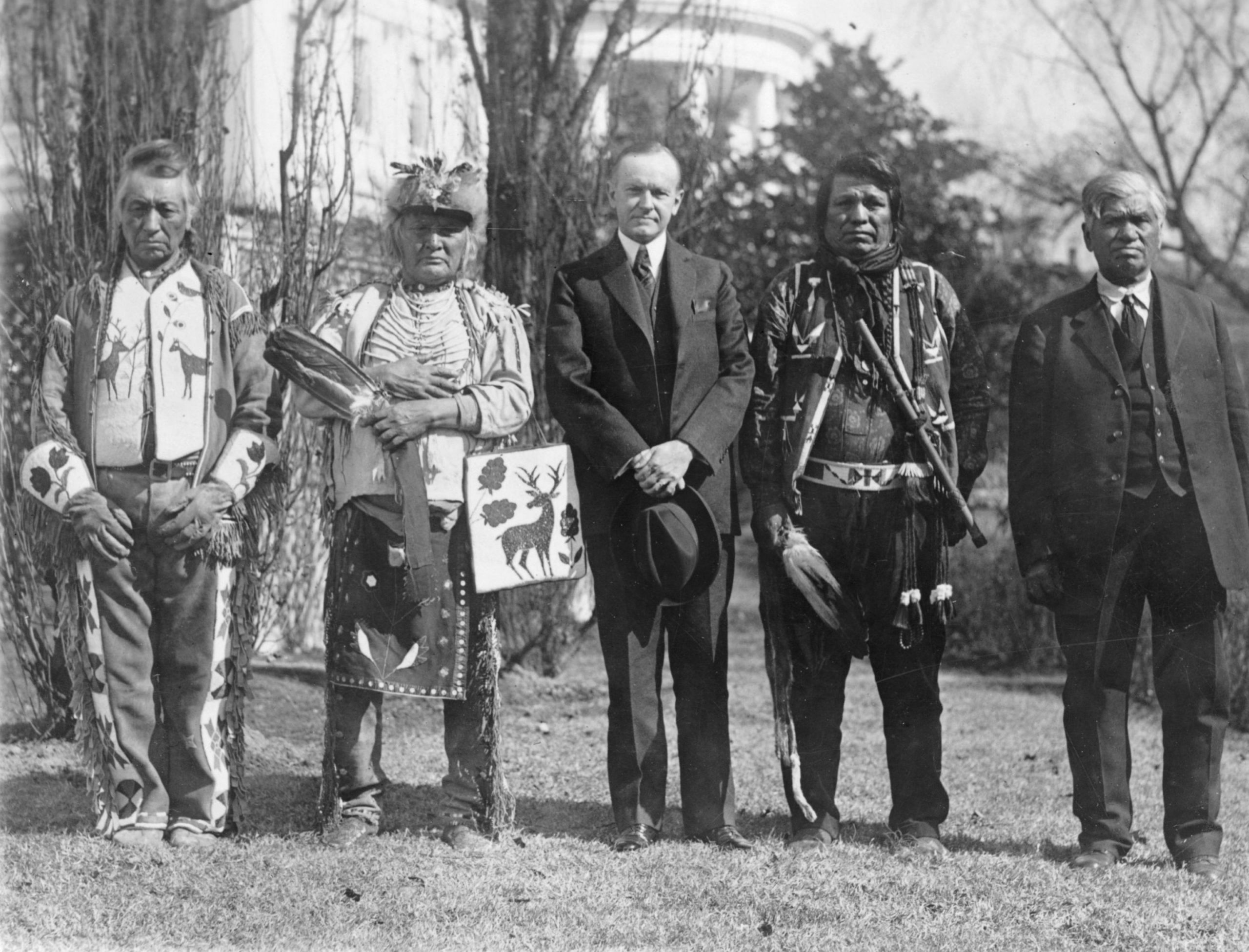
While Coolidge supported business and social issues, he did not seem to believe the government should have a particularly activist agenda. Other Americans, however, continued their activism. American women had won the vote with the passage of the Nineteenth Amendment in 1920. Female voters, like their male counterparts, pursued many interests. Concerned about squalor, poverty, and domestic violence and convinced that alcohol was to blame, women had already lobbied for prohibition, which went into effect under the Eighteenth Amendment in January 1920. Other women reformers urged government action to ameliorate high mortality rates among infants and children, provide federal aid for education, and ensure peace and disarmament. Some activists advocated protective legislation for women and children, while Alice Paul and the National Woman’s Party called for the elimination of all legal distinctions “on account of sex” through the proposed Equal Rights Amendment (ERA), which was introduced but defeated in Congress.
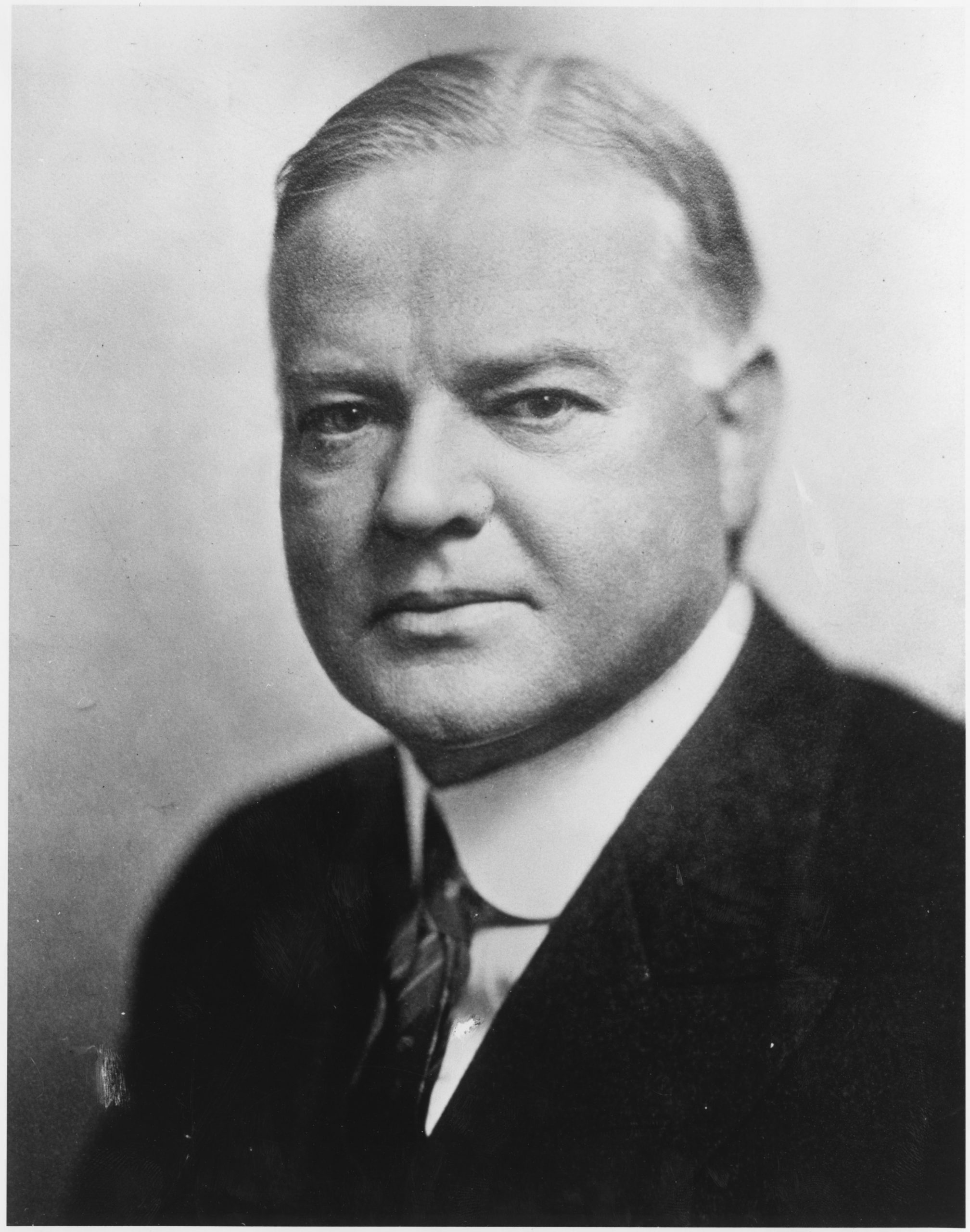
National politics in the 1920s were dominated by the Republican Party, which held not only the presidency but both houses of Congress as well. In a note passed to American reporters, Coolidge announced his decision not to run in the presidential election of 1928. Republicans nominated Herbert Hoover, an orphan from Iowa who had graduated from Stanford, become wealthy as a mining engineer, and won a deserved reputation as a humanitarian for his relief efforts in war-torn Europe. Coolidge had kept Hoover on as secretary of commerce after Harding’s death, but was not thrilled about endorsing him. He once remarked that “for six years that man has given me unsolicited advice—all of it bad.” Running against Hoover was Democrat Alfred E. Smith, the four-time governor of New York and the son of Irish immigrants. Smith was a part of the New York political machine and favored workers’ protections while also opposing prohibition and immigration restrictions. Hoover focused on economic growth and prosperity. As secretary of commerce under Harding and Coolidge, he claimed credit for the sustained growth seen during the 1920s. Hoover boasted in 1928 that America had never been closer to eliminating poverty. Much of the election, however, centered on Smith’s religion. Not only was he a Catholic, Smith opposed Protestant America’s greatest political triumph: Prohibition. Many Protestant ministers preached against Smith and warned that as president he would take orders from the pope. Hoover won in a landslide. While Smith won handily in the nation’s largest cities, portending future political trends, he lost most of the rest of the country. Even several solidly Democratic southern states chose a Republican for the first time since Reconstruction.
Questions for Discussion
- How were Republican politicians able to hold onto the White House for an entire generation after World War I?
- What was the appeal of Herbert Hoover?
“Change is in the very air Americans breathe, and consumer changes are the very bricks out of which we are building our new kind of civilization,” announced marketing expert and home economist Christine Frederick in her influential 1929 book, Selling Mrs. Consumer (which she incidentally dedicated to Herbert Hoover). The book, based on one of the earliest surveys of American buying habits, advised manufacturers and advertisers how to capture the purchasing power of women, who, according to Frederick, controlled 90 percent of household expenditures. In addition to offering advertisers insight into consumer psychology, Frederick’s text captured the tremendous social and economic transformations that had been wrought over the course of her lifetime. The consumer change she studied had resulted from the industrial expansion that flooded the market with a range of consumer products such as ready-to-wear clothing, convenience foods, and home appliances. By the end of the nineteenth century, output had risen so dramatically that many contemporaries feared supply had outpaced demand and that the nation would soon face the devastating financial consequences of overproduction. American businessmen attempted to avoid this catastrophe by developing new merchandising and marketing strategies that transformed distribution and stimulated a new culture of consumer desire.
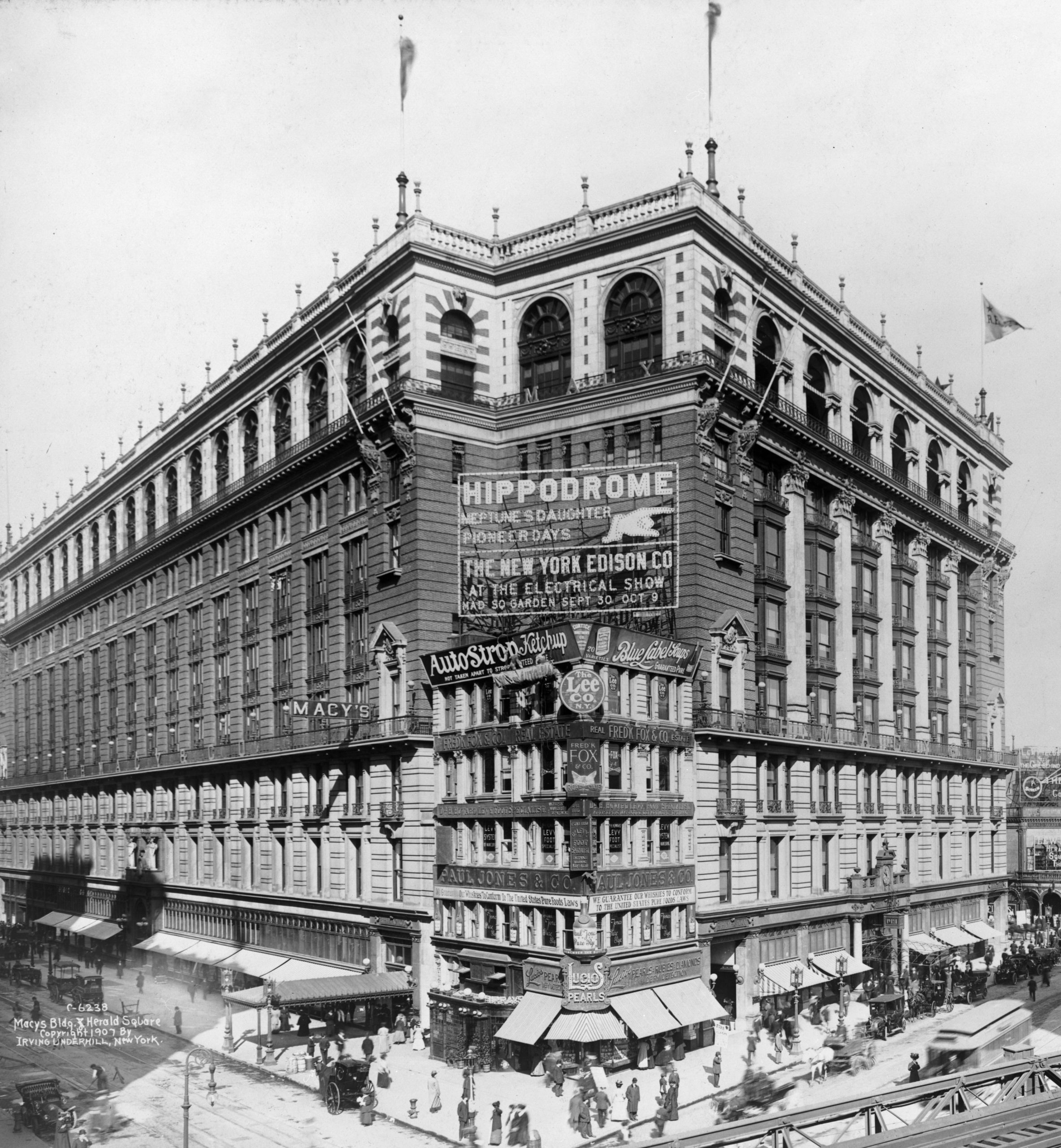
The department store stood at the center of this early consumer revolution. By the 1880s, a few large dry-goods retailers had blossomed into modern department stores that concentrated a broad array of goods under a single roof, allowing customers to purchase shirts and gloves alongside toy trains and washbasins. To attract customers, department stores employed innovations in service such as access to restaurants, writing rooms, and babysitting, and spectacle such as elaborately decorated store windows, fashion shows, and interior merchandise displays. Marshall Field & Co. was among the most successful of these ventures. Located on State Street in Chicago, the company pioneered strategies including a tearoom that provided refreshment to the well-heeled female shoppers who composed the store’s clientele. Reflecting on the success of Field’s marketing techniques, Thomas W. Goodspeed, an early trustee of the University of Chicago, wrote, “Perhaps the most notable of Mr. Field’s innovations was that he made a store in which it was a joy to buy.”
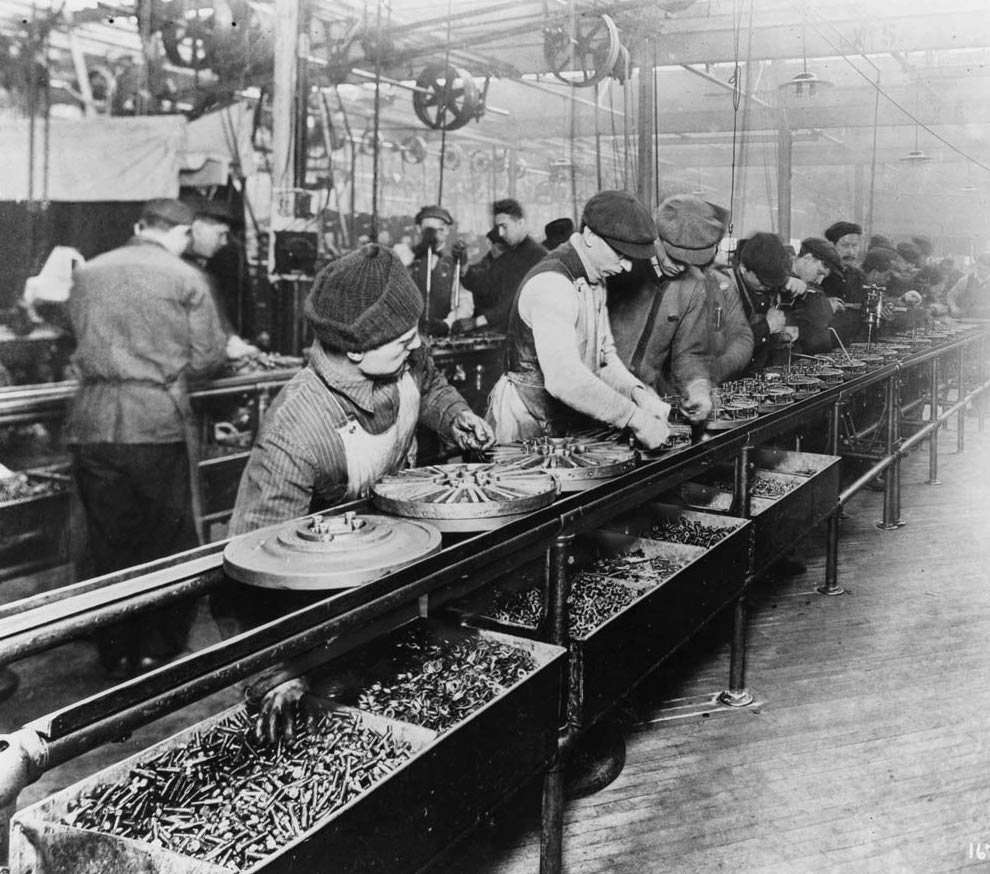
The joy of buying infected a growing number of Americans in the early twentieth century as the rise of mail-order catalogs, mass-circulation magazines, and national branding further stoked consumer desire. Henry Ford’s assembly line, which advanced production strategies practiced within countless industries, brought automobiles within the reach of middle-income Americans and further drove the spirit of consumerism. By 1925, Ford’s factories were turning out a Model-T every ten seconds. But in addition to learning to make cars more quickly and inexpensively, Ford had also realized that along with creating a product for consumers, he also needed to produce consumers. In 1913, Henry Ford hired 52,000 men to fill 14,000 positions in his factories. In 1914, Ford boosted the daily wage to $5, more than double the going rate for factory workers. Turnover at his factories dropped dramatically, work quality improved, and suddenly Ford workers could afford the cars they built. And not just Ford workers, because other factories were forced to raise their wages to meet Ford’s. The number of registered cars ballooned from just over nine million in 1920 to nearly twenty-seven million by the decade’s end. Americans owned more cars than Great Britain, Germany, France, and Italy combined. In the late 1920s, 80 percent of the world’s cars drove on American roads. The automobile industry also fostered the new culture of consumption by promoting the use of credit. By 1927, more than 60 percent of American automobiles were sold on credit, and installment purchasing was made available for nearly every other large consumer purchase. Spurred by access to easy credit, consumer expenditures for household appliances more than doubled between 1919 and 1929.
Questions for Discussion
- How did national consumer brands become popular?
- What was Henry Ford’s main contribution to consumerism?
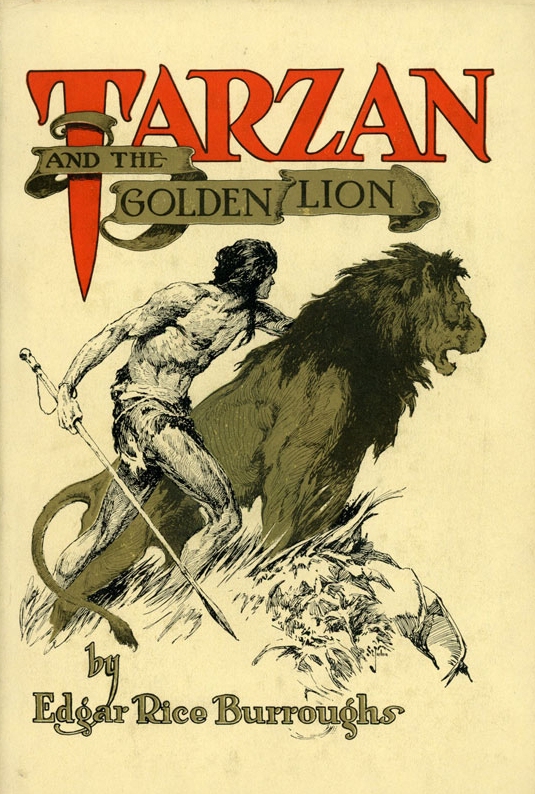
As transformative as steam and iron had been in the previous century, gasoline and electricity in the form of automobiles, film, and radio propelled not only consumption but also the escapist popular culture in the 1920s. “We wish to escape,” explained Edgar Rice Burroughs, author of the Tarzan series, “the restrictions of manmade laws, and the inhibitions that society has placed upon us.” Burroughs published a new Tarzan story nearly every year from 1914 until 1939. “We would each like to be Tarzan,” he said. “At least I would; I admit it.” Like many Americans in the 1920s, Burroughs wished to escape the constraints of a society that seemed more industrialized with each passing day. And like Burroughs, Americans escaped the limitations of their own day-to-day existence. Whether through Hollywood’s latest films, jazz music on Edison’s new phonograph records, or listening to radio broadcasts of Jack Dempsey’s prizefights, the public wrapped itself in popular culture. As the automobile became more popular and more reliable, more people traveled more frequently and attempted greater distances. Women increasingly drove themselves to their own activities as well as those of their children. Vacationing Americans sped to Florida to escape northern winters. Young men and women fled the supervision of courtship, exchanging the chaperoned parlor couch for making out in the backseat of a sedan. In order to capture the growing number of drivers, Americans erected gas stations, diners, motels, and billboards along the roadside. Automobiles themselves became objects of entertainment when nearly a hundred thousand people gathered to watch drivers compete for the $50,000 prize of the second Indianapolis 500 race on Memorial Day, 1912.
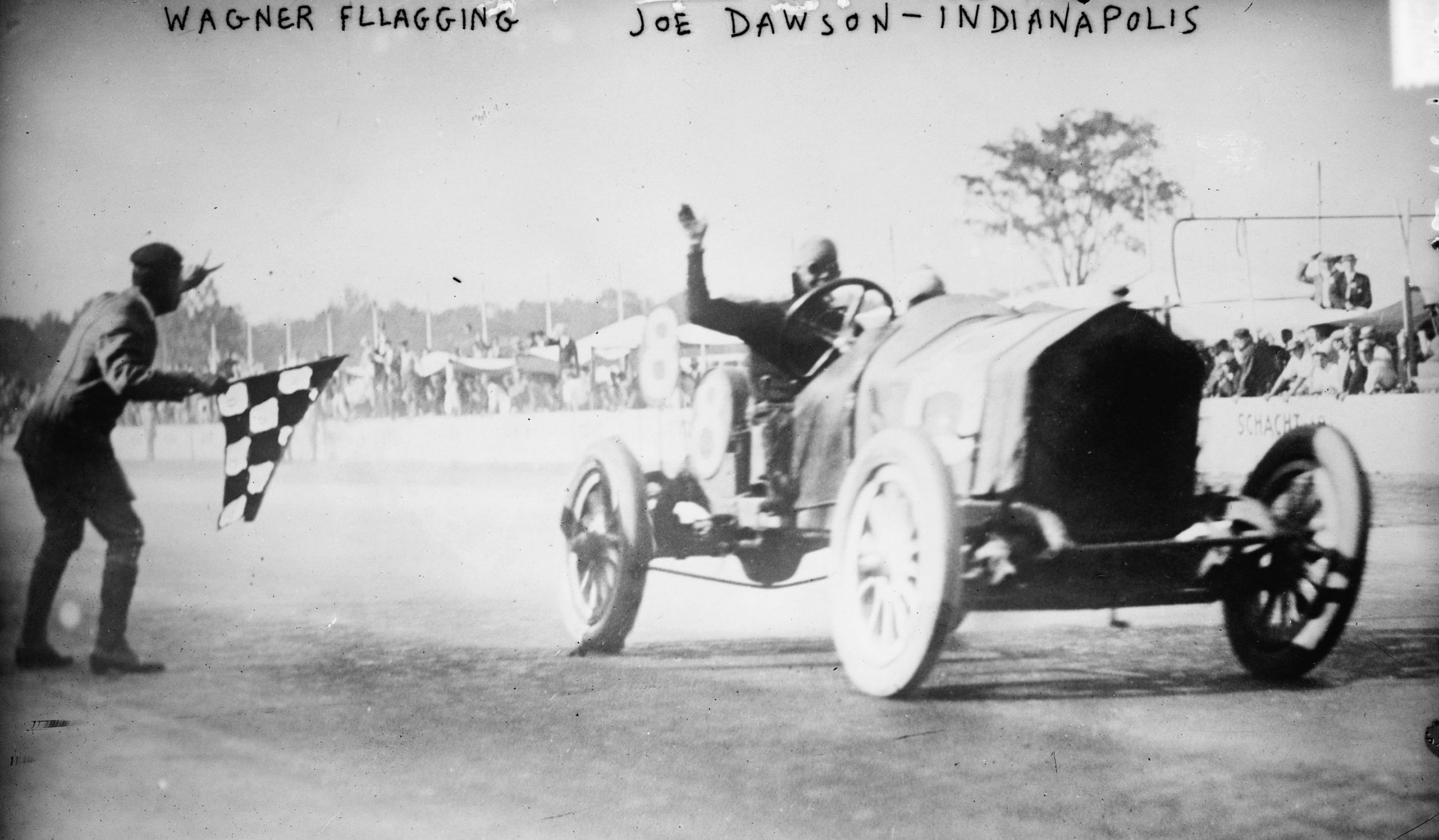
Meanwhile, the United States dominated the global film industry. By 1930, as moviemaking became more expensive, a handful of film companies took control of the industry. Immigrants, mostly of Jewish heritage from central and Eastern Europe, had the opportunity to “invent Hollywood” because most middle- and upper-class Americans viewed cinema as lower-class entertainment. After their parents emigrated from Poland in 1876, Harry, Albert, Sam, and Jack Warner began making films during World War I and later established Warner Bros. In 1918, Universal, Paramount, Columbia, and Metro-Goldwyn-Mayer (MGM) were all founded by or led by Jewish executives. Aware of their social status as outsiders, these immigrants and sons of immigrants deliberately produced films that portrayed American values of opportunity, democracy, and freedom.
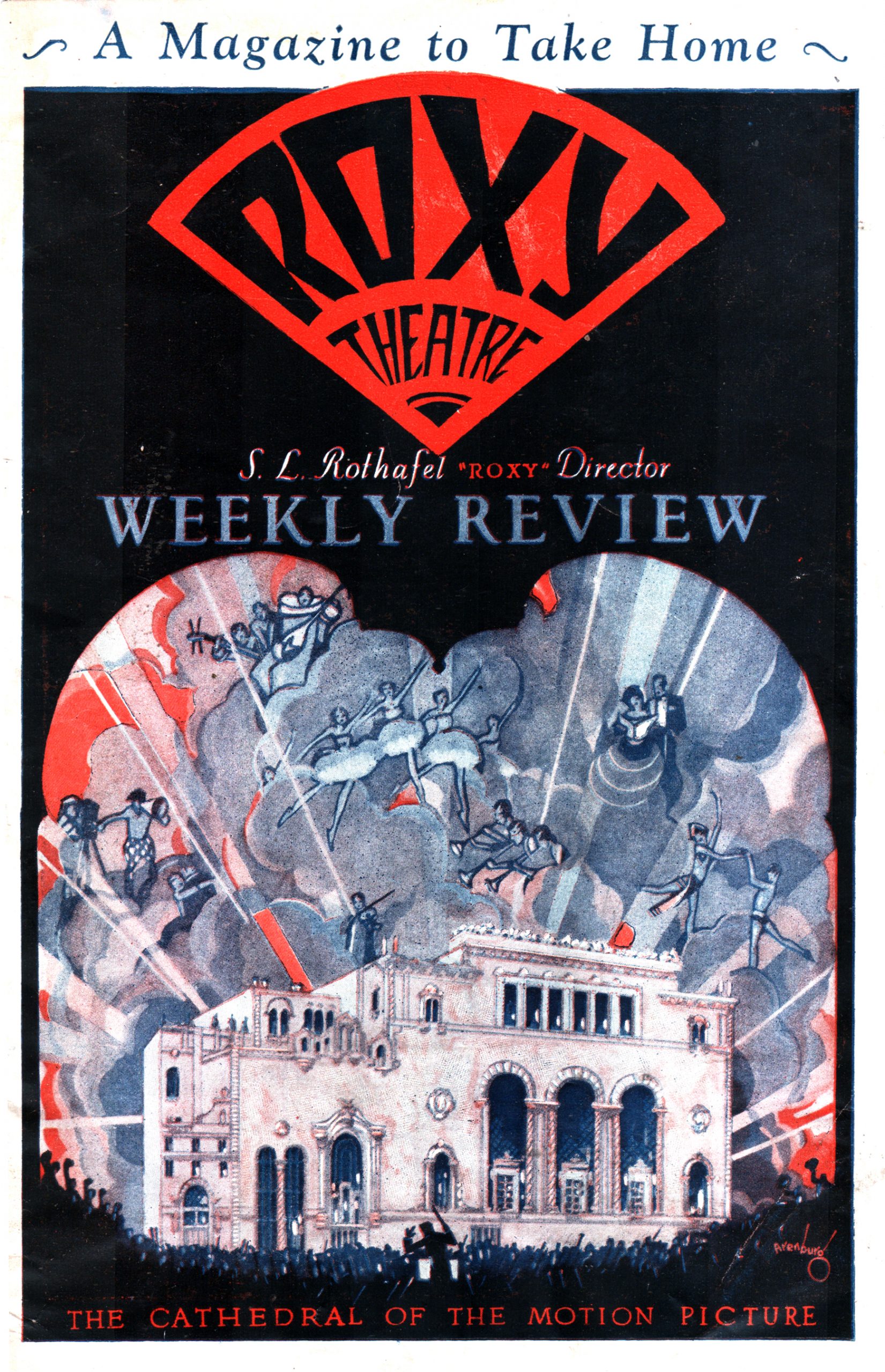
Not content with distributing thirty-minute films in cheap, five-cent amusement halls known as nickelodeons, these early film moguls produced longer, higher-quality films and showed them in palatial theaters, attracting viewers who had previously shunned the film industry. But as filmmakers captured the middle and upper classes, they maintained working-class moviegoers by blending traditional and modern values. Cecil B. DeMille’s 1923 epic The Ten Commandments depicted orgiastic revelry, for instance, while still managing to celebrate a biblical story. Samuel Rothafel’s Roxy Theater in New York held more than six thousand patrons who could be escorted by a uniformed usher past gardens and statues to their cushioned seat. In order to show The Jazz Singer (1927), the first movie with synchronized words and pictures, the Warners spent half a million dollars to equip two theaters with the new technology. “Sound is a passing fancy,” one MGM producer told his wife, but Warner Bros.’ assets, which increased from just $5,000,000 in 1925 to $230,000,000 in 1930, tell a different story.
Americans fell in love with the movies. Whether it was the surroundings, the sound, or the production budgets, weekly movie attendance skyrocketed from sixteen million in 1912 to forty million in the early 1920s. Hungarian immigrant William Fox, founder of Fox Film Corporation, declared that “the motion picture is a distinctly American institution” because “the rich rub elbows with the poor” in movie theaters. With no seating restriction, the one-price admission was accessible for nearly all Americans (African Americans, again the exception, were either excluded or segregated). Women represented more than 60 percent of moviegoers, packing theaters to see Mary Pickford, nicknamed “America’s Sweetheart,” who was earning one million dollars a year by 1920 through a combination of film and endorsements contracts. Pickford and other female stars popularized the image of the “flapper,” an independent woman who favored short skirts, makeup, and cigarettes.
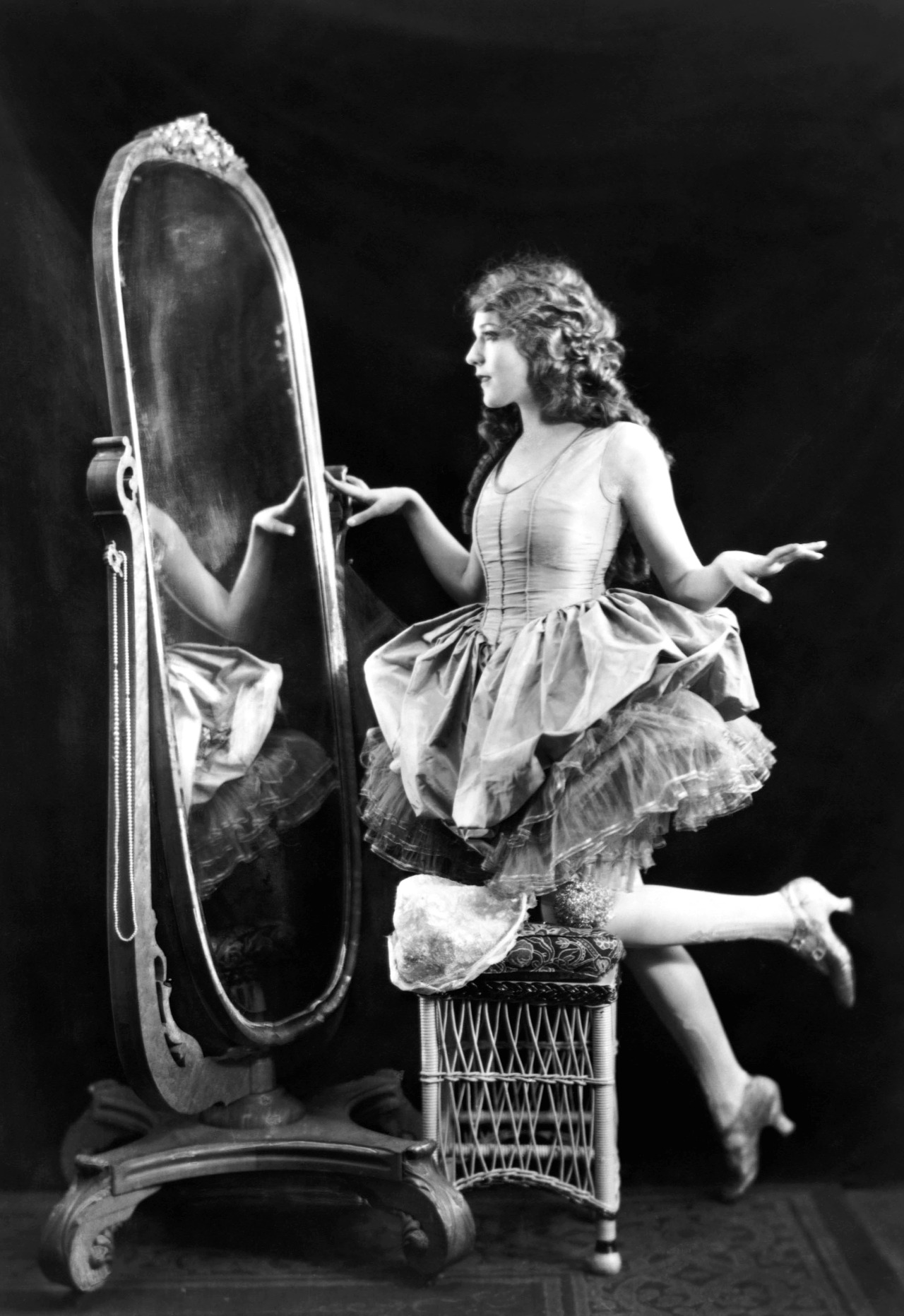
As Americans went to the movies more and more, at home they had the radio. Italian scientist Guglielmo Marconi transmitted the first transatlantic wireless message in 1901, but radios in the home did not become available until around 1920. Around half of American homes contained a radio by 1930. Radio stations brought entertainment directly into the living room through the sale of advertisements and sponsorships, from The Maxwell House Hour to the Lucky Strike Orchestra. Soap companies sponsored daytime dramas so frequently that an entire genre of “soap operas” was born, providing housewives with audio adventures that stood in stark contrast to common chores. Though radio stations were often under the control of corporations like the National Broadcasting Company (NBC) or the Columbia Broadcasting System (CBS), radio programs were less constrained by traditional boundaries in order to capture as wide an audience as possible, spreading popular culture on a national level.

Radio exposed Americans to a broad array of music. Jazz, a uniquely American musical style popularized by the African-American community in New Orleans, spread primarily through radio stations and records. The New York Times had ridiculed jazz as “savage” because of its racial heritage, but the music represented cultural independence to others. As Harlem-based musician William Dixon put it, “It did seem, to a little boy, that . . . white people really owned everything. But that wasn’t entirely true. They didn’t own the music that I played.” The fast-paced and spontaneity-laced tunes invited the listener to dance along. “When a good orchestra plays a ‘rag,’” dance instructor Vernon Castle recalled, “one has simply got to move.” Jazz became a national sensation, played and heard by whites and blacks both. Jewish Lithuanian-born singer Al Jolson, whose biography inspired The Jazz Singer and who played the film’s titular character, became the most popular singer in America.
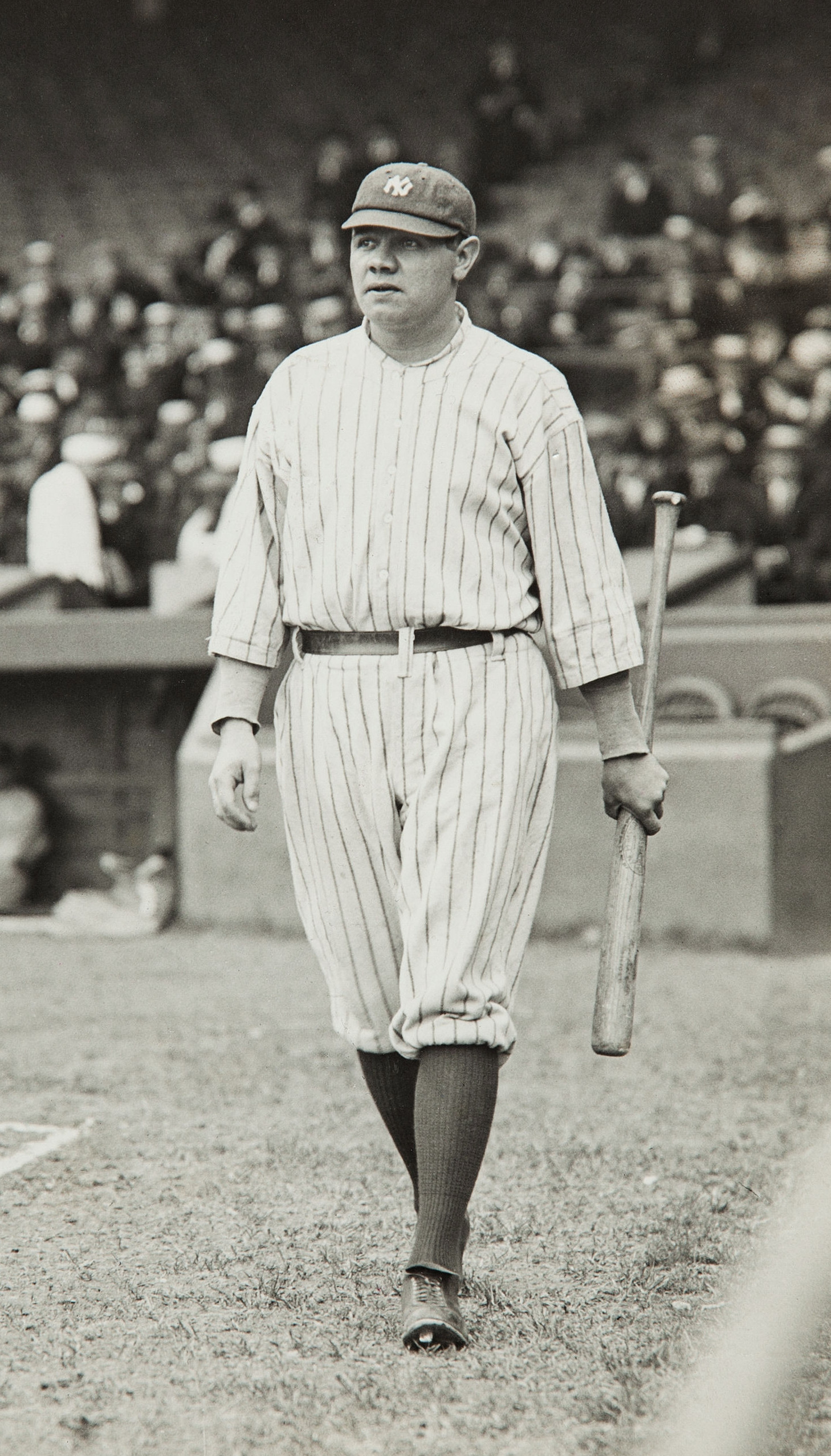
The 1920s also witnessed the maturation of professional sports. Play-by-play radio broadcasts of collegiate and professional sporting events marked a new era for sports, despite the racial segregation in most. Suddenly, Jack Dempsey’s left crosses and right uppercuts could almost be felt in homes across the United States. Dempsey, who held the heavyweight championship for most of the decade, drew million-dollar gates and inaugurated “Dempseymania” in newspapers across the country. But no sports figure left a bigger mark than did Babe Ruth. Born George Herman Ruth, the “Sultan of Swat” grew up in an orphanage in Baltimore’s slums. Ruth’s emergence onto the national scene was much needed, as the baseball world had been rocked by the so-called Black Sox Scandal in which eight players allegedly agreed to throw the 1919 World Series. Originally a pitcher for the Boston Red Sox, Ruth switched to the outfield when he was sold to the New York Yankees in 1919. Ruth hit fifty-four home runs in 1920, which was more than any other team combined. Baseball writers called Ruth a superman, and more Americans could recognize Ruth than president Warren G. Harding.
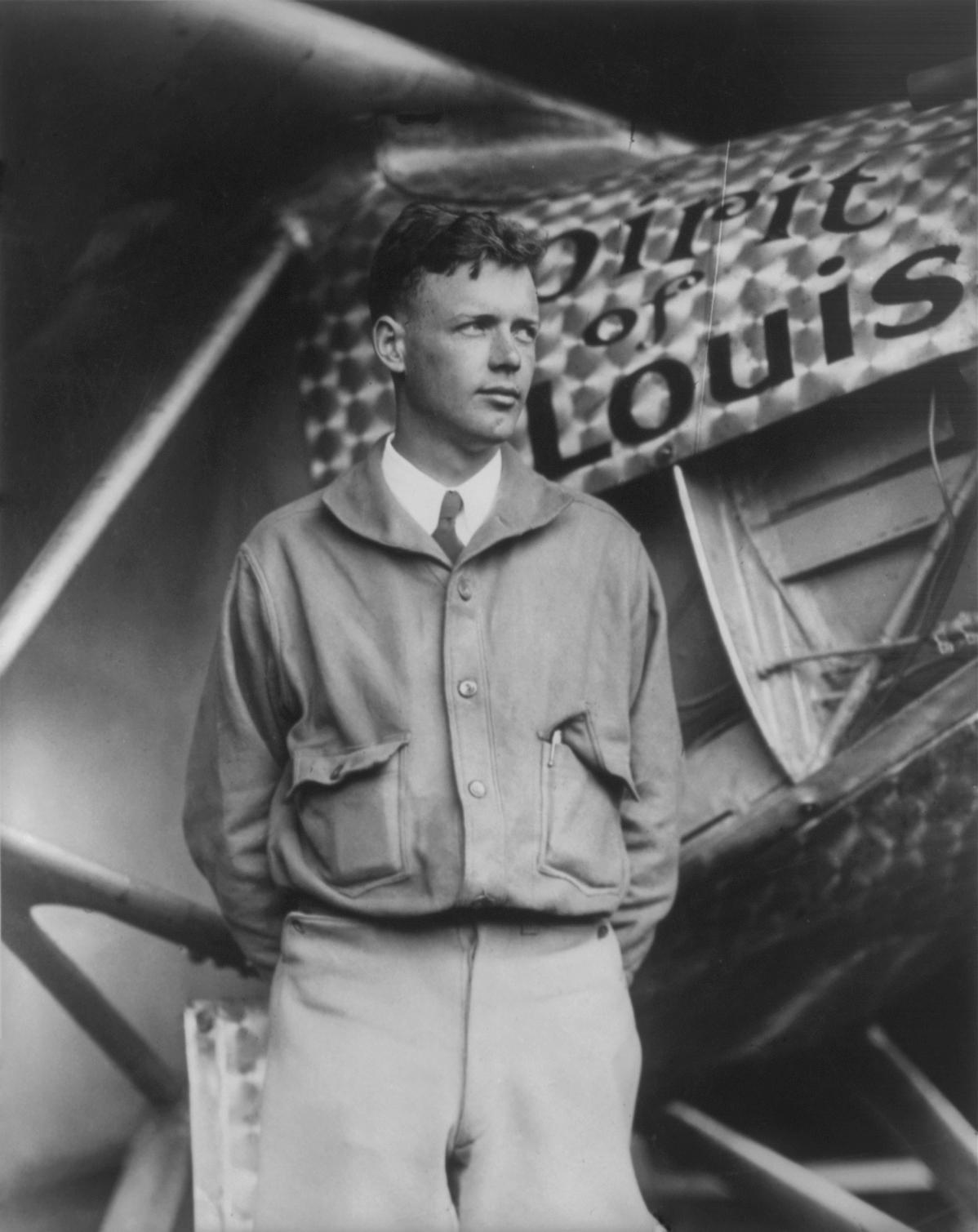
After an era of destruction and doubt brought about by World War I, Americans craved heroes who seemed to defy convention and break boundaries. Dempsey and Ruth dominated their respective sports, but only Charles Lindbergh conquered the sky. On May 21, 1927, Lindbergh concluded the first ever nonstop solo flight from New York to Paris. Armed with only a few sandwiches, bottles of water, paper maps, and a flashlight, Lindbergh successfully navigated over the Atlantic Ocean in thirty-three hours. Some historians have dubbed Lindbergh the “hero of the decade,” not only for his transatlantic journey but because he helped to restore the faith of many Americans in individual effort and technological advancement. In a world so recently devastated by machine guns, submarines, and chemical weapons, Lindbergh’s flight demonstrated that technology could inspire and accomplish great things. Outlook Magazine called the Detroit native “the heir of all that we like to think is best in America.”
The decade’s popular culture seemed to revolve around escape. Coney Island in New York marked new amusements for young and old. Americans drove their sedans to massive theaters to enjoy major motion pictures. Radio towers broadcasted the bold new sound of jazz, the adventures of soap operas, and the feats of athletes like Jack Dempsey. Babe Ruth smashed home runs out of ball parks across the country. And Lindbergh escaped the earth’s gravity and crossed an entire ocean. Neither Dempsey nor Ruth nor Lindbergh made Americans forget the horrors of World War I and the chaos that followed, but they made it seem as if the future would be that much brighter.
Babe Ruth’s incredible talent accelerated the popularity of baseball, cementing it as America’s pastime. Ruth’s propensity to shatter records made him a national hero. Library of Congress.
Questions for Discussion
- What was the role of immigrants in the new media culture?
- How was the role of sports and entertainment changing?
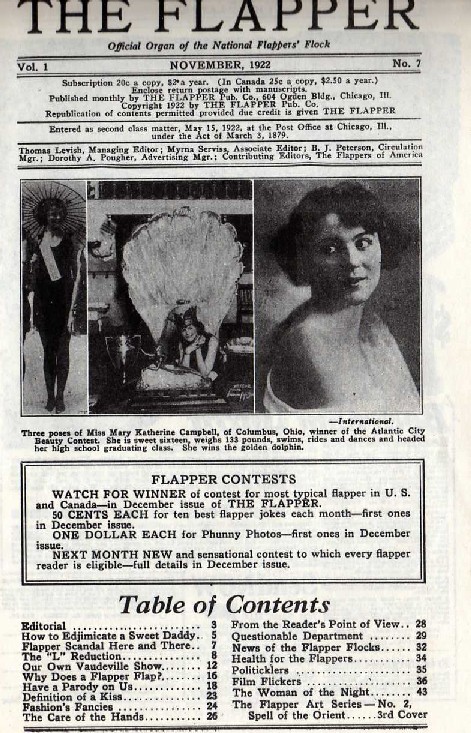
The rising national emphasis on materialism and individual pleasure were embodied in the figure of the flapper, whose bobbed hair, short skirts, makeup, cigarettes, and carefree spirit captured the attention of American novelists such as F. Scott Fitzgerald and Sinclair Lewis. Rejecting the old Victorian values of desexualized modesty and self-restraint, young flappers seized opportunities for the public coed pleasures offered by new commercial leisure institutions such as dance halls, cabarets, and nickelodeons, not to mention the illicit speakeasies spawned by Prohibition. The flapper helped usher in a new morality that permitted women greater independence, freedom of movement, and access to the delights of urban living. In the words of psychologist G. Stanley Hall, “She was out to see the world and, incidentally, be seen of it.”
The new freedom of women, however, was never far from consumption. A 1930 Chicago Tribune advertisement called “Feminine Values” declared, “Today’s woman gets what she wants. The vote. Slim sheaths of silk to replace voluminous petticoats. Glassware in sapphire blue or glowing amber. The right to a career. Soap to match her bathroom’s color scheme.” New ideas about sex and gender were in many ways a study in contradictions. It was the decade of the “New Woman,” in which only 10 percent of married women (but nearly half of unmarried women) worked outside the home. It was a decade in which new technologies decreased time requirements for household chores, and one in which standards of cleanliness and order in the home rose to often impossible standards. It was a decade in which women finally could exercise their right to vote, and one in which the thinly-bound women’s coalitions that had won that victory splintered into various causes. Finally, it was a decade in which images such as the “flapper” gave women new modes of representing femininity, and one in which such representations were often inaccessible to women of certain races, ages, and classes.
Women gained increased opportunities to work outside the home. The number of professional women rose significantly in the 1920s. But limits still existed, even for professional women. Occupations such as law and medicine remained overwhelmingly male and most female professionals were in feminized professions such as teaching and nursing. And even within these fields, it was difficult for women to rise to leadership positions.
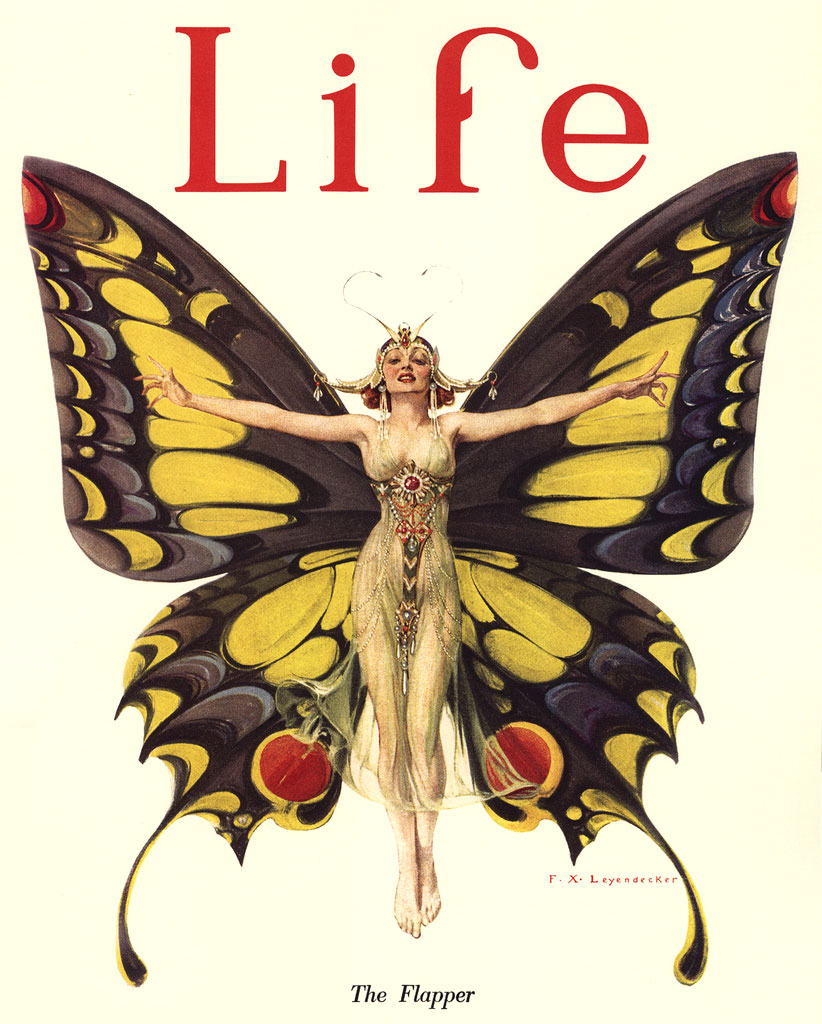
Further, it is crucial not to overgeneralize the experience of all women based on a subset of the population. A woman’s race, class, ethnicity, and marital status all had an impact on both her opportunity to work outside the home and the types of jobs that were available to her. And not all women were equally excited about the changes in their status or eager to leave their homes to take a job. Also, for many minority women, work outside the home was not a cultural statement but rather a financial necessity, and physically demanding, low-paying domestic service work continued to be the most common job type. Young, working-class white women were joining the workforce more frequently, too, but often to help support their struggling mothers and fathers.
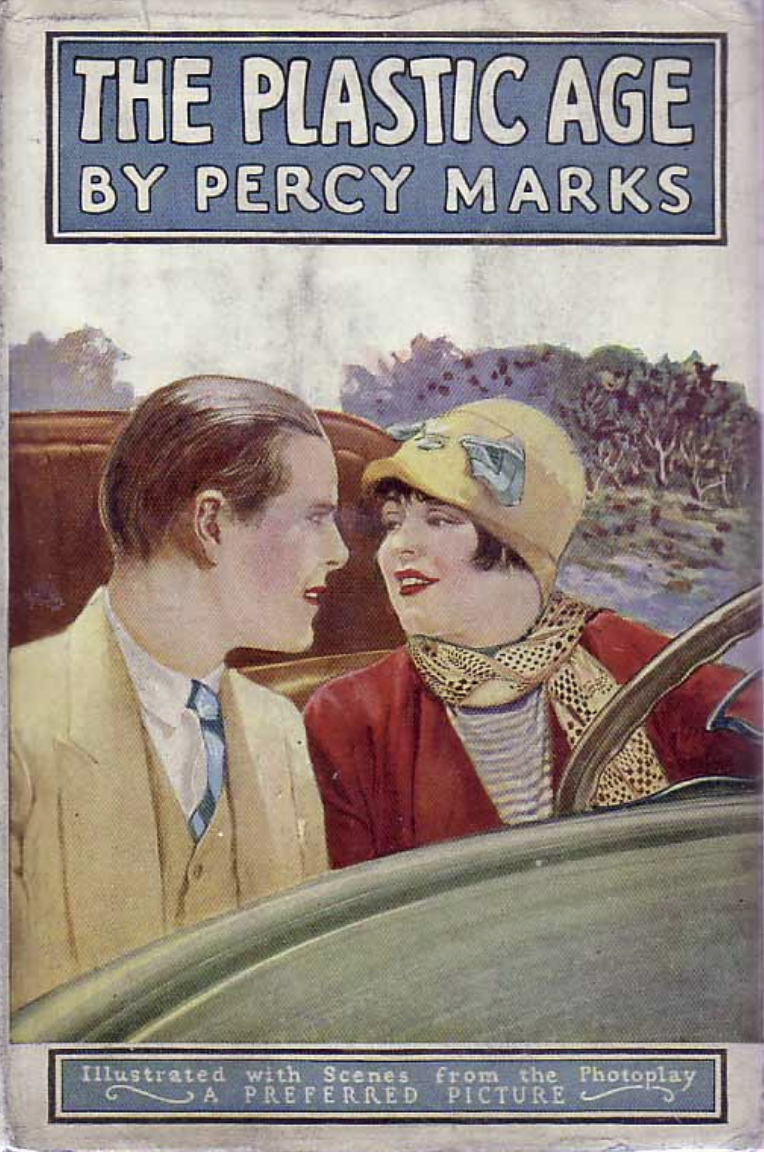
For the young, middle-class, white women most likely to fit the image of the carefree flapper, the most common workplace was the office. These predominantly single women increasingly became clerks and secretaries, jobs that had been primarily male earlier in the century. But here, too, there was a clear ceiling. While entry-level clerical jobs became increasingly feminized, jobs at higher, more lucrative levels remained dominated by men. Often, rather than changing the culture of the workplace, the entrance of women into lower-level jobs primarily changed the coding of the jobs themselves. Like nursing and teaching, such positions simply became “women’s work.”
Finally, as these same women grew older and married, social changes became even subtler. Married women were, for the most part, expected to remain in the domestic sphere. While new patterns of consumption gave them more power and, arguably, more autonomy, new household technologies and philosophies of marriage and child-rearing increased expectations, further tying these women to the home. Of course, the number of women in the workplace is not the only measure of changes in sex and gender norms. Attitudes towards sex, for example, continued to change in the 1920s , with significantly different impacts on different social groups. But for many young, college-educated white women, an attempt to rebel against what they saw as a repressive Victorian notion of sexuality led to an increase in premarital sexual activity strong enough that it became, in the words of one historian, “almost a matter of conformity.”
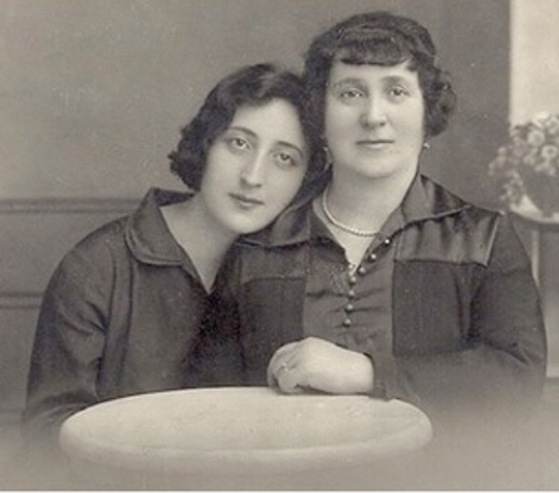
In the homosexual community, meanwhile, a vibrant gay culture grew, especially in urban centers such as New York. While gay males had to contend with increased policing of the gay lifestyle, in general they lived more openly in New York in the 1920s than would be possible for many decades following World War II. At the same time, for many lesbians in the decade, the increased sexualization of women brought new scrutiny to same-sex female relationships previously dismissed as harmless. Ultimately, the most enduring symbol of the changing notions of gender in the 1920s remains the flapper. But it is just that: a representation of womanhood of the 1920s. There were many women in the decade of differing races, classes, ethnicities, and experiences, just as there were many men with different experiences. For some women, the 1920s were a time of reorganization, new representations, and new opportunities. For others, it was a decade of confusion, contradiction, new pressures, and struggles between new and old.
Questions for Discussion
- In what ways were women successful in causing and taking advantage of changes in American society?
- In what ways were they unsuccessful?
Just as cultural limits loosened across the nation, the 1920s represented a period of serious self-reflection among African Americans, most especially those in northern ghettos. New York City was a popular destination of American blacks during the Great Migration. The city’s black population grew 257 percent, from 91,709 in 1910 to 327,706 in 1930, while the white population grew only 20 percent. Moreover, by 1930, 98,620 foreign-born blacks had migrated to the United States. Nearly half made their home in Manhattan’s Harlem district.
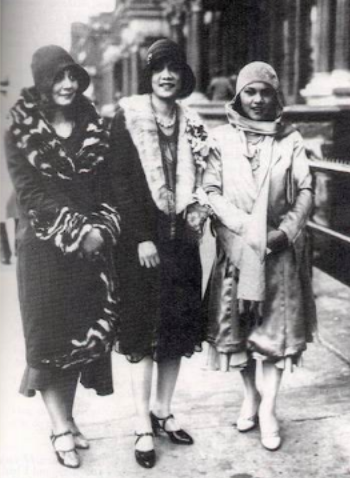
Harlem originally lay between Fifth Avenue and Eighth Avenue, from 130th Street to 145th Street in the northwest of Manhattan. By 1930, the district had expanded to 155th Street and was home to 164,000 people, mostly African Americans. Continuous relocation to “the greatest Negro City in the world” exacerbated problems with health, housing, crime, and unemployment. Nevertheless, it brought together a population of black people energized by race pride, military service in World War I, urban life, and for many the ideas of Pan-Africanism. James Weldon Johnson called Harlem the black “Culture Capital.” The area’s energy produced what was then termed the New Negro Movement.
Alain Locke’s 1925 book The New Negro proclaimed that after generations of subservience, “we are achieving something like a spiritual emancipation.” Popular Harlem Renaissance writers published twenty-six novels, ten volumes of poetry, and countless short stories between 1922 and 1935. Alongside the well-known Langston Hughes and Claude McKay, female writers like Jessie Redmon Fauset and Zora Neale Hurston published nearly a third of these novels. While themes varied, the literature frequently explored and countered the stereotypes and forms of American racial prejudice. The Harlem Renaissance influenced theater, art, and music. For the first time, Broadway presented black actors in serious roles. The 1924 production Dixie to Broadway was the first all-black show with mainstream showings. In art, Meta Vaux Warrick Fuller, Aaron Douglas, and Palmer Hayden showcased black cultural heritage and captured current black experience. In music, jazz rocketed in popularity. Eager to hear “real jazz,” whites journeyed to Harlem’s Cotton Club and Smalls. Harlem’s nightclubs and speakeasies (secret, illegal venues where alcohol was publicly consumed) presented a place where sexual freedom and gay life thrived. Unfortunately, while headliners like Duke Ellington were hired to entertain at Harlem’s venues, the surrounding black community was usually excluded. Furthermore, black performers were often restricted from restroom use and relegated to service door entry.
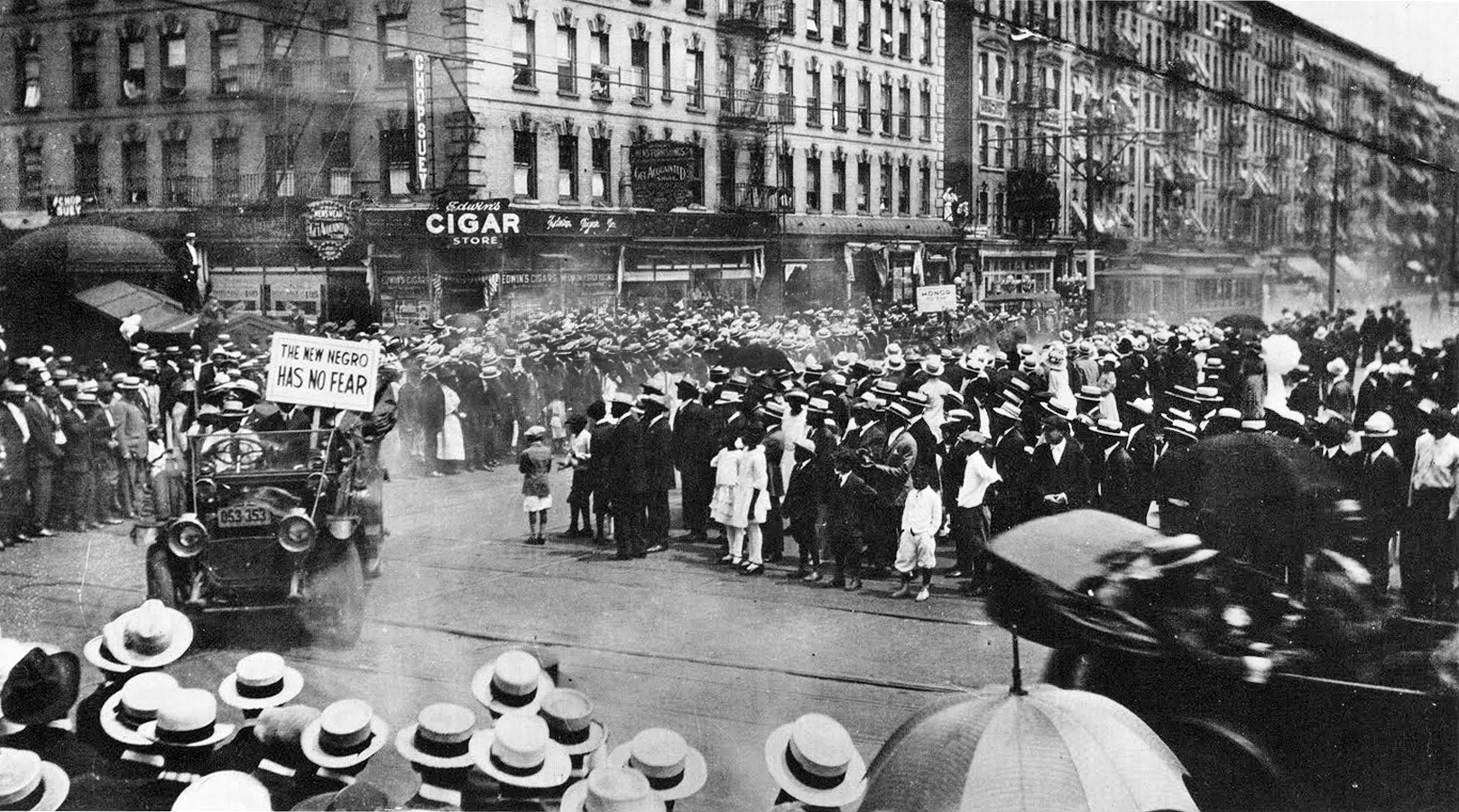
The explosion of African American self-expression found multiple outlets in politics. In the 1910s and 1920s, perhaps no one so attracted disaffected black activists as Marcus Garvey. Garvey was a Jamaican publisher and labor organizer who arrived in New York City in 1916. Within just a few years of his arrival, he built the largest black nationalist organization in the world, the Universal Negro Improvement Association (UNIA). Inspired by Pan-Africanism and Booker T. Washington’s model of industrial education, and critical of what he saw as Du Bois’s service of black elites, Garvey sought to promote racial pride, encourage black economic independence, and root out oppression in Africa and the Diaspora. Headquartered in Harlem, the UNIA published a newspaper, Negro World, and organized elaborate parades in which Garveyites dressed in militaristic regalia and marched down city streets. The organization criticized the slow pace and the judicial focus of the NAACP as well as its acceptance of memberships and funds from whites. “For the Negro to depend on the ballot and his industrial progress alone,” Garvey opined, “will be hopeless as it does not help him when he is lynched, burned, jim-crowed, and segregated.” In 1919, the UNIA announced plans to develop a shipping company called the Black Star Line as part of a plan that pushed for blacks to reject the American political system and to return to Africa instead. Most of the investments came in shares purchased by UNIA members who had heard Garvey’s speeches about the importance of establishing commercial ventures between African Americans, Afro-Caribbeans, and Africans.
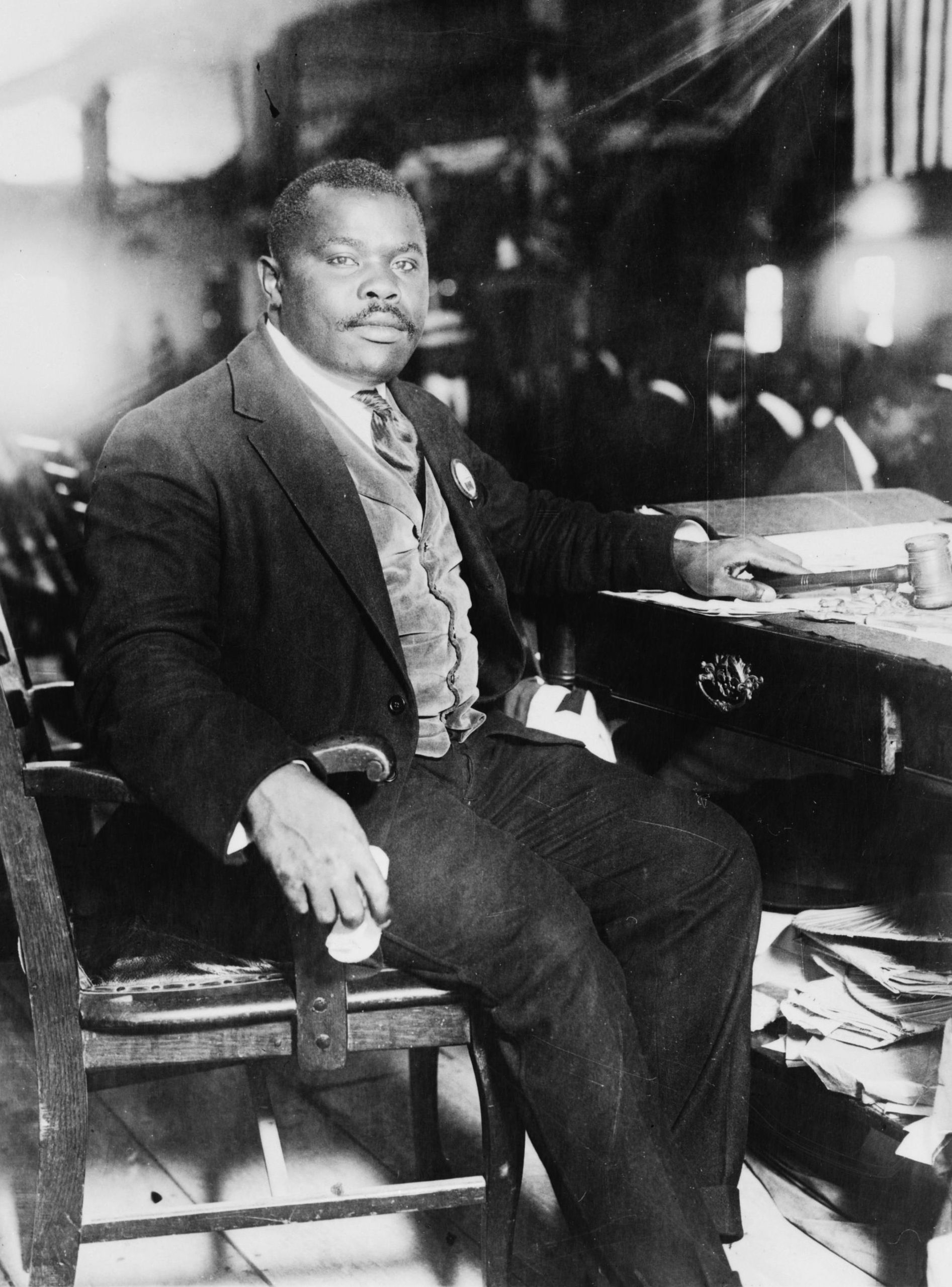
Garvey’s detractors disparaged these public displays and business ventures, and they criticized Garvey for peddling empty promises in place of measures that addressed the material concerns of African Americans. NAACP leaders depicted Garvey’s plan as one that simply said, “Give up! Surrender! The struggle is useless.” Enflamed by his aggressive attacks on other black activists and his radical ideas of racial independence, some African American and Afro-Caribbean leaders worked with government officials and launched the “Garvey Must Go” campaign, which culminated in his 1922 indictment and 1925 imprisonment and subsequent deportation for “using the mails for fraudulent purposes.” The UNIA never recovered its popularity or financial support, even after Garvey’s pardon in 1927, but his movement made a lasting impact on black consciousness in the United States and abroad. He inspired the likes of Malcolm X, whose parents were Garveyites, and Kwame Nkrumah, the first president of Ghana. Garvey’s message, perhaps best captured by his rallying cry, “Up, you mighty race,” resonated with African Americans who found in Garveyism a dignity not granted them in their everyday lives.
Question for Discussion
- What contributions did black authors and artists make to the culture of the 1920s?
In addition their alarm over immigration of Catholics and Jews, a new group of Christian fundamentalists were very concerned about relaxed sexual mores and increased social freedoms, especially in cities. Fundamentalists lashed out against what they saw as a sagging public morality, a world in which Protestantism seemed challenged by Catholicism, women exercised ever greater sexual freedoms, public amusements encouraged selfish and empty pleasures, and Prohibition was mocked through bootlegging and speakeasies. Christian Fundamentalism arose from a doctrinal dispute among Protestant leaders. Liberal theologians had begun to intertwine religion with science and secular culture. These Modernists argued that Christian doctrines about the miraculous might be best understood metaphorically. The Church, they said, needed to adapt itself to the world. The social gospel, which encouraged Christians to build the Kingdom of God on earth by working against social and economic inequality, was very much tied to liberal theology.
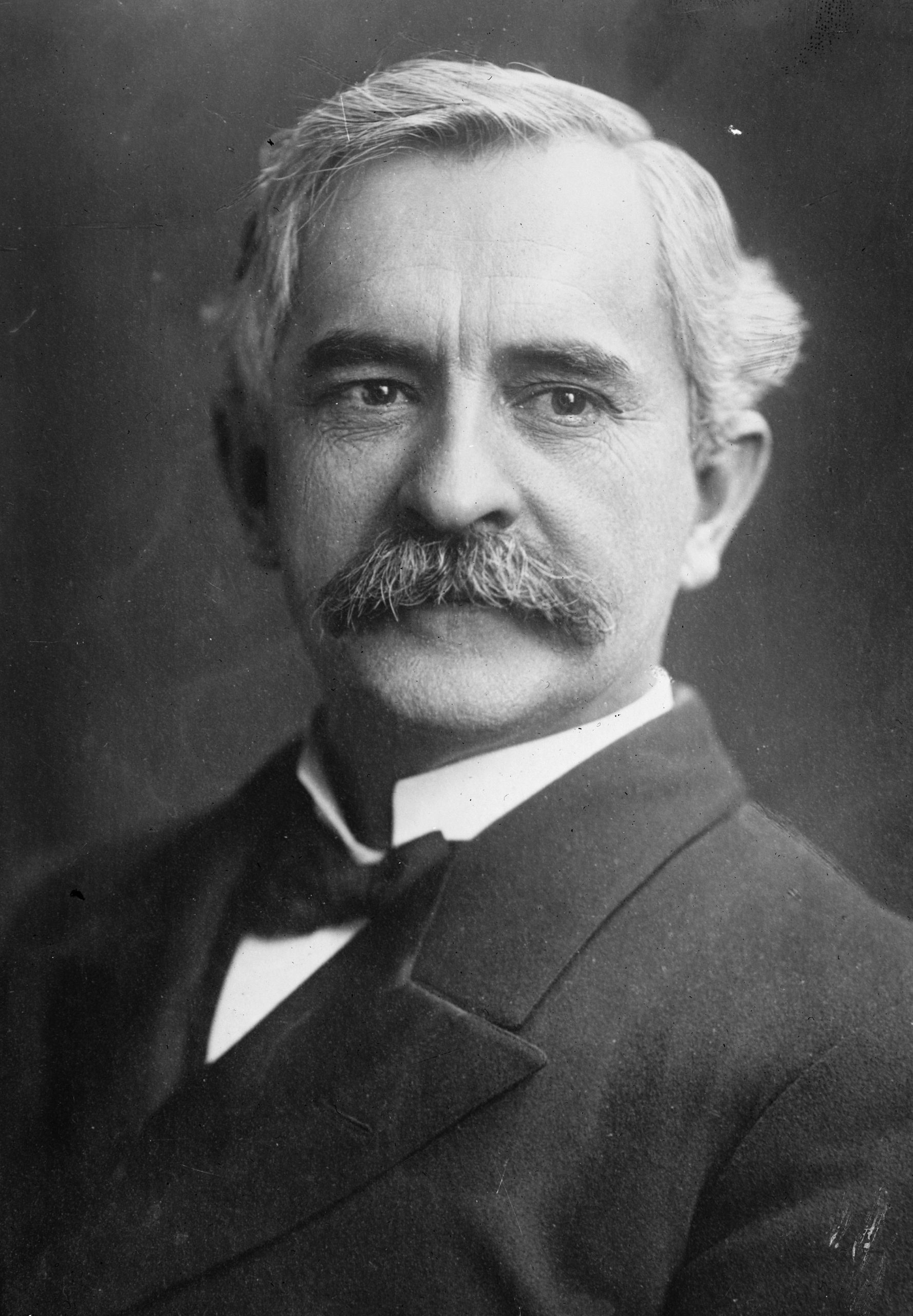
During the 1910s, funding from oil barons Lyman and Milton Stewart enabled the evangelist A. C. Dixon to commission some ninety essays to attack Protestant liberalism. The collection, known as The Fundamentals, argued that Christian faith rested on literal truths: that Jesus, for instance, would physically return to earth at the end of time to redeem the righteous and damn the wicked. All the supernatural claims and miracles of the Bible were literally true, The Fundamentals said, and should never be considered as metaphors or as the misunderstandings of an earlier age. Some of the essays claimed that human endeavor could never build the Kingdom of God, while others covered such subjects as the virgin birth and biblical inerrancy. American fundamentalists spanned Protestant denominations and borrowed from diverse philosophies and theologies. They did, however, all agree that modernism was the enemy and the Bible was the inerrant word of God. It was a fluid movement often without clear boundaries, but it featured many prominent clergymen, including the well-established and extremely vocal John Roach Straton (New York), J. Frank Norris (Texas), and William Bell Riley (Minnesota).
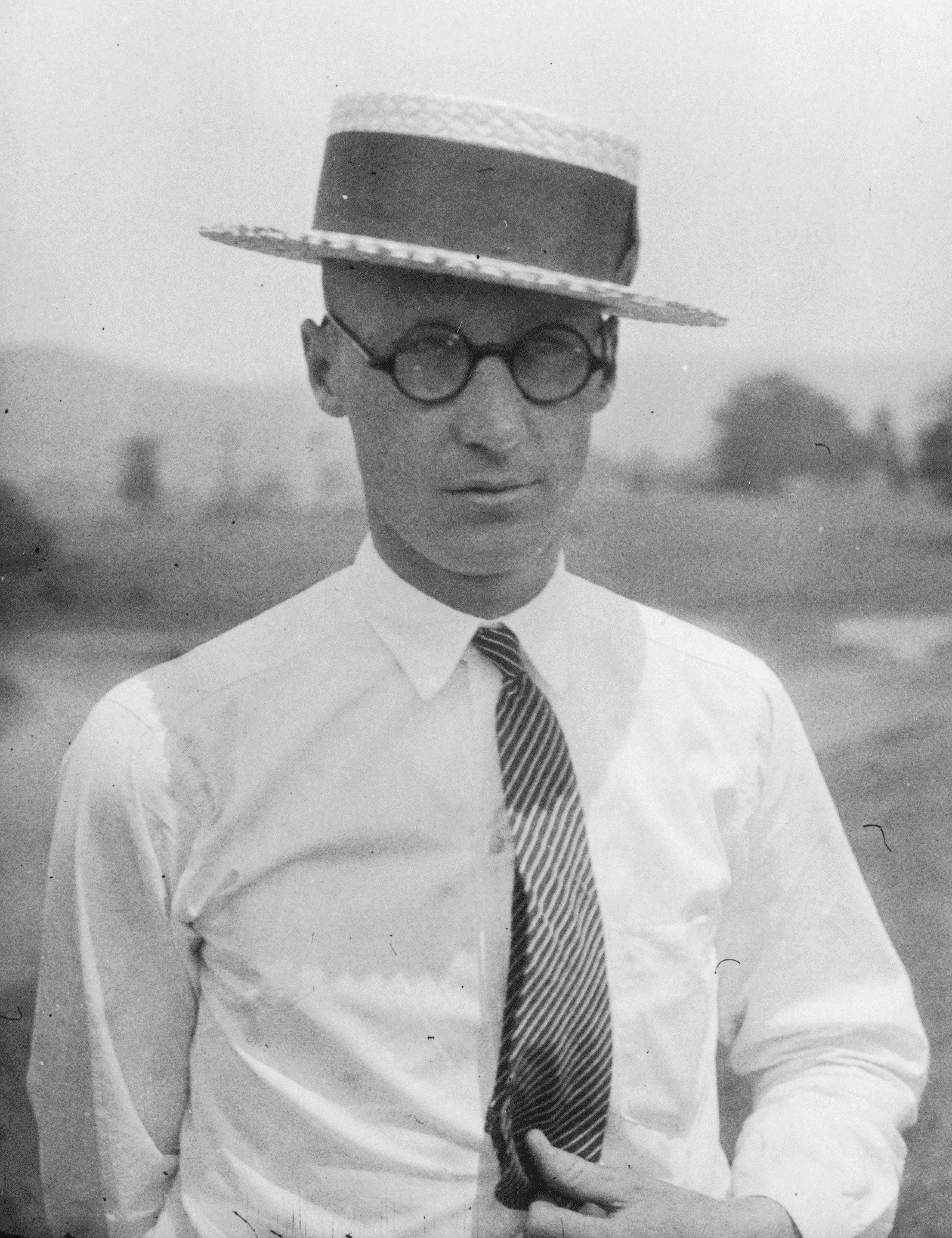
The most dramatic contest between fundamentalism and American mainstream culture was the Scopes Monkey Trial of 1925. On March 21, in a tiny courtroom in Dayton Tennessee, fundamentalists gathered to defend creation and attack evolution. A young biology teacher, John T. Scopes, was being tried for teaching his students evolutionary theory in violation of the Butler Act, a state law preventing any theory that denied “the Divine Creation of man as taught in the Bible” from being taught in publicly funded Tennessee classrooms. Seeing the act as a threat to personal liberty, the American Civil Liberties Union (ACLU) had immediately found a volunteer for a test case, hoping that subsequent appeals would lead to a day in the Supreme Court, testing the constitutionality of the law. Scopes, a part-time teacher and coach, voluntarily admitted to teaching evolution. Scopes’s violation of the law was never in question and the stage was set for the pivotal courtroom showdown, “the trial of the century” between the champions and opponents of evolution that marked a key moment in an enduring American “culture war.”
The case became a public spectacle. Clarence Darrow, an agnostic attorney and a keen liberal mind from Chicago, volunteered to aid the defense against William Jennings Bryan. The prosecutor was the three-time presidential candidate who in his younger days had led the political crusade against corporate greed. He had championed Populism with a firm belief in the righteousness of his cause, and now he defended biblical literalism in similar terms. The theory of evolution, Bryan said, with its emphasis on the survival of the fittest, “would eliminate love and carry man back to a struggle of tooth and claw.” Although this sentiment is more true of Social Darwinism than Darwin’s actual theory, it is unclear whether Bryan appreciated that fact or whether he was arguing that the effect of teaching Darwin would be the acceptance of Social Darwinism.

Newspapermen and spectators flooded the small town of Dayton. Across the nation, Americans tuned their radios to the live national broadcasts of a trial that dealt with questions of religious liberty, academic freedom, parental rights, and the moral responsibility of education. For six days in July, the men and women of America were captivated as Bryan presented his argument on the morally corrupting influence of evolutionary theory (and pointed out that Darrow had made a similar argument about the corruptive potential of education during his defense of the famed killers Nathan Leopold and Richard Loeb a year before). Darrow eloquently fought for academic freedom.
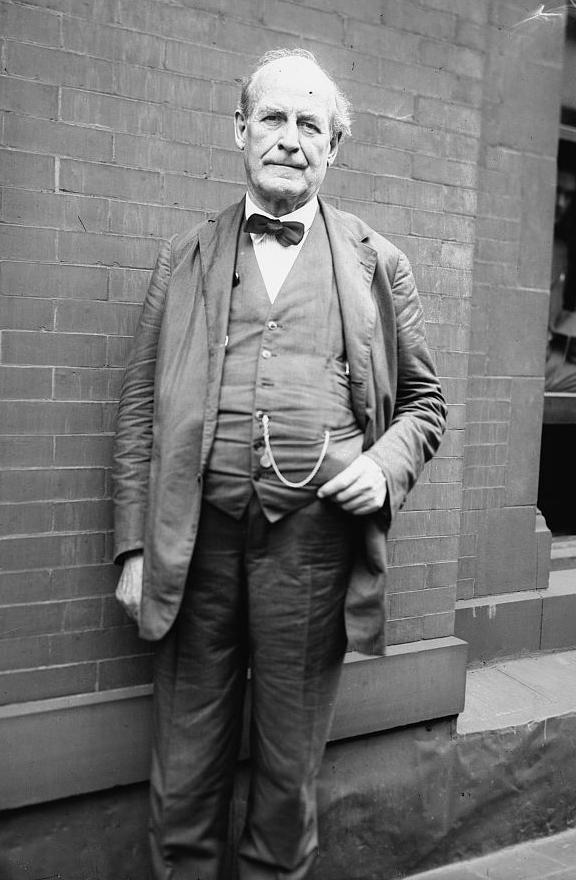
Bryan’s actual objection to the teaching of evolution was that he thought rejecting the Bible threw morality out of the classroom. Darrow argued that the Establishment Clause of the First Amendment made the Butler Act unconstitutional. Then, the trial turned away from either of those points when at the request of the defense, Bryan took the stand as an “expert witness” on the Bible. Although three years younger than Darrow, Bryan was no match for Darrow’s still sharp skills as a trial lawyer and his answers came across as blundering and incoherent. It became clear that Bryan was not in fact a literal believer in all of the Genesis account: believing, as many anti-evolutionists did, that the meaning of the word day in the book of Genesis could be taken as allegory. Bryan reluctantly admitted as much, not wishing to alienate his fundamentalist followers. Then Darrow posed a series of unanswerable questions: Was the “great fish” that swallowed the prophet Jonah created for that specific purpose? What precisely happened astronomically when God made the sun stand still? Bryan could cite only his faith in miracles. Embarrassed by these logical contradictions, Bryan’s testimony was a public relations disaster, although his statements were expunged from the record the next day and no further experts were allowed. Scopes’s guilt being well established, the jury delivered a guilty verdict in minutes. Scopes began his appeal process in the Tennessee Supreme Court and the court set aside his conviction on a legal technicality, which made it impossible to continue appealing to the U.S. Supreme Court. But few cared about the verdict. Darrow had already won in the court of public opinion and the fundamentalists seemed to have taken a beating in the national limelight. Satirist H. L. Mencken characterized the “circus in Tennessee” as an embarrassment for fundamentalism, and modernists celebrated the “Monkey Trial” as a smashing victory. If fundamentalists retreated from the public sphere, they did not disappear entirely. Instead, they went local, built an underground subculture, and emerged many decades later stronger than ever.
Questions for Discussion
- What was the point of the “Monkey Trial”?
- What did the controversy over the trial say about the differences between “country people” and “city people”?
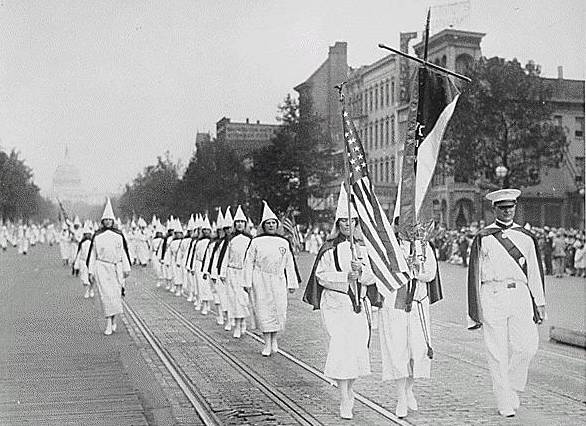
The release of The Birth of a Nation in 1915 valorized the Reconstruction Era Klan as a protector of feminine virtue and white racial purity. Taking advantage of this sudden surge of popularity, Colonel William Joseph Simmons organized what is often called the “second” Ku Klux Klan in Georgia in late 1915. This new Klan, modeled after other fraternal organizations with elaborate rituals and a hierarchy, remained largely confined to Georgia and Alabama until 1920, when Simmons began a professional recruiting effort that resulted in individual chapters being formed across the country and membership rising to an estimated five million.
Following the Great Migration of southern blacks to northern cities during World War I, the KKK expanded above the Mason-Dixon Line. Membership soared in Philadelphia, Detroit, Chicago, and Portland, while Klan-endorsed mayoral candidates won in Indianapolis, Denver, and Atlanta. The Klan often recruited through fraternal organizations such as the Freemasons and through Protestant churches. In many areas, local Klansmen visited churches with a gift of money for the presiding minister, often during services. The Klan also enticed people to join through large picnics, parades, rallies, and ceremonies. The Klan established a women’s auxiliary in 1923 headquartered in Little Rock, Arkansas. The Women of the Ku Klux Klan mirrored the KKK in practice and ideology and soon had chapters in all forty-eight states, often attracting women who were already part of the Prohibition movement, a centerpiece of Klan activism.Contrary to its image as a primarily southern and lower-class phenomenon, the second national Klan was composed largely of middle-class members. In 1923 and 1924, at the organization’s peak, the largest number of Klan-related activities occurred in Texas, Pennsylvania, Indiana, Illinois, and Georgia. The Klan was even present in Canada, where it was a powerful force within Saskatchewan’s Conservative Party. In many states and localities, the Klan dominated politics to such a level that no candidate could be elected without the support of the KKK. At its peak the Klan claimed between four and five million members.
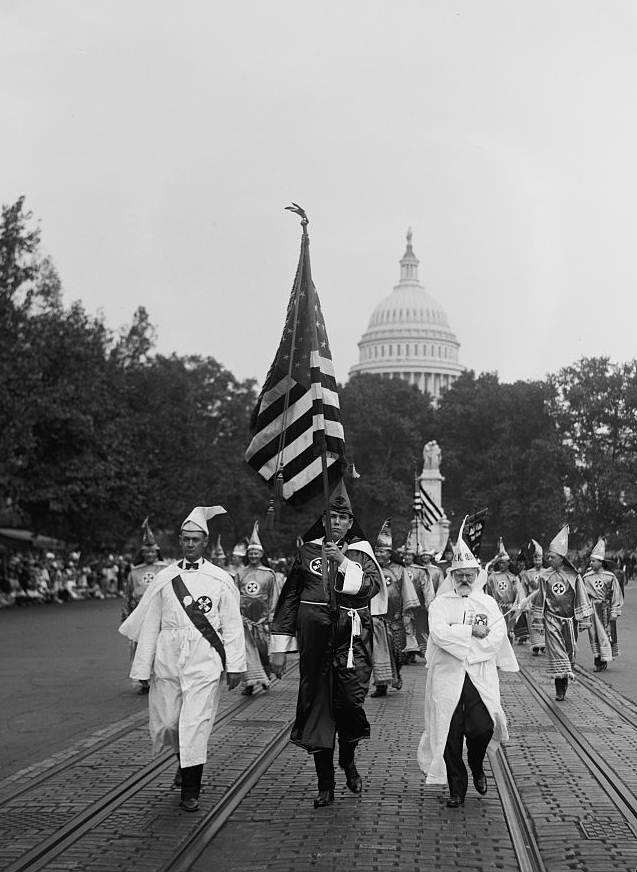
Despite the breadth of its political activism, the Klan is today remembered largely as a violent vigilante group, with good reason. Klan members and affiliate organizations often engaged in lynching and “nightriding”, the physical harassment of bootleggers, union activists, civil rights workers, or any others deemed “immoral”, under the cover of darkness while wearing their hoods and robes. In fact, Klan violence was extensive enough in Oklahoma that Governor John C. Walton placed the entire state under martial law in 1923. Witnesses testifying before the military court disclosed accounts of Klan violence ranging from the flogging of clandestine brewers to the disfiguring of a prominent black Tulsan for registering African Americans to vote. In Houston, Texas, the Klan maintained an extensive system of surveillance that included tapping telephone lines and putting spies in the local post office to root out “undesirables.” A mob organized and led by Klan members in Aiken, South Carolina, lynched Bertha Lowman and her two brothers in 1926. No one was ever prosecuted because the sheriff, deputies, city attorney, and state representative all belonged to the Klan.
Question for Discussion
- What did the rebirth of the Klan and the continuation of lynching suggest about US attitudes regarding their communities?
In his inauguration speech in 1929, Herbert Hoover told Americans that the Republican Party had brought national prosperity. Even ignoring stubbornly large rates of poverty and unparalleled levels of inequality, he could not see the weaknesses behind the decade’s economy. As the new culture of consumption promoted new freedoms, it also promoted new insecurities. An economy built on credit exposed the nation to tremendous risk. Flailing European economies, high tariffs, wealth inequality, a construction bubble, and an ever-more flooded consumer market loomed dangerously until the Roaring Twenties crashed to a halt. In The fall of 1929 the nation’s glitz and glamour seemed to give way to decay and despair. For farmers, racial minorities, unionized workers, and other populations that did not share in 1920s prosperity, the veneer of a Jazz Age and a booming economy had always been a fiction. But for them, as for millions of Americans, the end of an era was close. The Great Depression loomed.
Primary Sources
Warren G. Harding and the “Return to Normalcy” (1920)
Republican Senator and presidential candidate Warren G. Harding of Ohio delivered the following address to the Home Market Club of Boston on May 14, 1920. In it, Harding outlined his hope that the United States would, after a decade of progressive politics and foreign interventions, return to “normalcy.” In November, Harding received the highest percentage of the popular vote in a presidential election up to that time.
Crystal Eastman, “Now We Can Begin” (1920)
In the following selection, Crystal Eastman, a socialist and feminist, considered what women should fight for following the ratification of the Nineteenth Amendment, which granted American women the right to vote.
Explanation of the Objects of the Universal Negro Improvement Association (1921)
Inspired by the writings of Booker T. Washington, Jamaican-born Marcus Garvey became the most prominent Black Nationalist in the United States. He championed the back-to-Africa movement, advocated for black-owned businesses—he founded the Black Star Line, a transnational shipping company—and founded the Universal Negro Improvement Association. Thousands of UNIA chapters formed all across the world. In 1921, Garvey recorded a message in a New York studio explaining the object of the UNIA.
Hiram Evans on the “The Klan’s Fight for Americanism” (1926)
The “Second” Ku Klux Klan rose to prominence in the 1920s and, at its peak, claimed millions of Americans as members. Klansmen wrapped themselves in the flag and the cross and proclaimed themselves the moral guardians of America. The organization appealed to many “respectable,” middle-class Americans. Here, Imperial Wizard Hiram Evans, a dentist from Dallas, Texas, outlines the Second Klan’s potent mix of Americanism, Protestantism, and white supremacy.
Herbert Hoover, “Principles and Ideals of the United States Government” (1928)
Republican Herbert Hoover embodied the political conservatism of the 1920s. He denounced the regulation of business and championed the individual against “bureaucracy.” In November 1928, Hoover, a Protestant from the Midwest, soundly defeated Al Smith, an Irish Catholic from New York City. Here, in a speech delivered in late October, Hoover outlined his vision of American government.
In the 1920’s Americans across the country bought magazines like Photoplay in order to get more information about the stars of their new favorite entertainment media: the movies. Advertisers took advantage of this broad audience to promote a wide range of goods and services to both men and women who enjoyed the proliferation of consumer culture during this time.
This photo by popular news photographers Underwood and Underwood shows a gathering of a reported 300 Ku Klux Klansmen just outside Washington DC to initiate a new group of men into their order. The proximity of the photographer to his subjects for one of the Klan’s notorious night-time rituals suggests that this was yet another of the Klan’s numerous publicity stunts.
Reference Material
This chapter was remixed by Dan Allosso, who adapted The American Yawp Chapter 22 and added original content. The original Yawp chapter was edited by Brandy Thomas Wells, with content contributions by Micah Childress, Mari Crabtree, Maggie Flamingo, Guy Lancaster, Emily Remus, Colin Reynolds, Kristopher Shields, and Brandy Thomas Wells.
Recommended Reading
- Allen, Frederick Lewis. Only Yesterday: An Informal History of the 1920s. New York: Harper and Row, 1931.
- Baldwin, Davarian. Chicago’s New Negroes: Modernity, the Great Migration, and Black Urban Life. Chapel Hill: University of North Carolina Press, 2007.
- Blee, Kathleen M. Women of the Klan: Racism and Gender in the 1920s. Berkeley: University of California Press, 1991.
- Chauncey, George. Gay New York: Gender, Urban Culture, and the Making of the Gay Male World, 1890–1940. New York: Basic Books, 1995.
- Cohen, Lizabeth. Making a New Deal: Industrial Workers in Chicago, 1919–1939. New York: Cambridge University Press, 1990.
- Douglas, Ann. Terrible Honesty: Mongrel Manhattan in the 1920s. New York: Farrar, Straus and Giroux, 1995.
- Dumenil, Lynn. The Modern Temper: American Culture and Society in the 1920s. New York: Hill and Wang, 1995.
- Fox, Richard Wightman, and T. J. Jackson Lears, eds. The Culture of Consumption: Critical Essays in American History, 1880–1980. New York: Pantheon Books, 1983.
- Gage, Beverly. The Day Wall Street Exploded: A Story of America in Its First Age of Terror. New York: Oxford University Press, 2009.
- Grant, Colin. Negro with a Hat: The Rise and Fall of Marcus Garvey. New York: Oxford University Press, 2008.
- Hall, Jacquelyn. Like a Family: The Making of a Southern Cotton Mill World. Chapel Hill: University of North Carolina Press, 1987.
- Heap, Chad. Slumming: Sexual and Racial Encounters in American Nightlife, 1885–1940. Chicago: University of Chicago Press, 2010.
- Hernández, Kelly Lytle. Migra! A History of the U.S. Border Patrol. New York: University of California Press, 2010.
- Huggins, Nathan. Harlem Renaissance. New York: Oxford University Press, 1971.
- Larson, Edward. Summer for the Gods: The Scopes Trial and America’s Continuing Debate over Science and Religion. Cambridge, MA: Harvard University Press, 1997.
- MacLean, Nancy. Behind the Mask of Chivalry: The Making of the Second Ku Klux Klan. New York: Oxford University Press, 1994.
- Marsden, George M. Fundamentalism and American Culture: The Shaping of Twentieth-Century Evangelicalism: 1870–1925. New York: Oxford University Press, 1980.
- McGirr, Lisa. The War on Alcohol: Prohibition and the Rise of the American State. New York: Norton, 2016.
- Montgomery, David. The Fall of the House of Labor: The Workplace, the State, and American Labor Activism, 1865–1925. New York: Cambridge University Press, 1988.
- Ngai, Mae M., Impossible Subjects: Illegal Aliens and the Making of Modern America. Princeton, NJ: Princeton University Press, 2004.
- Okrent, Daniel. Last Call: The Rise and Fall of Prohibition. New York: Scribner, 2010.
- Sanchez, George. Becoming Mexican American: Ethnicity, Culture, and Identity in Chicano Los Angeles, 1900–1945. New York: Oxford University Press, 1993.
- Tindall, George Brown. The Emergence of the New South, 1913–1945. Baton Rouge: LSU Press, 1967.
- Weinrib, Laura. The Taming of Free Speech: America’s Civil Liberties Compromise. Cambridge, MA: Harvard University Press, 2016.
- Wilkerson, Isabel. The Warmth of Other Sons: The Epic Story of America’s Great Migration. New York: Vintage Books, 2010.
Media Attributions
- Handmade Software, Inc. Image Alchemy v1.11 © National Woman's Party is licensed under a Public Domain license
- Warren_G_Harding-Harris_&_Ewing © Harris & Ewing is licensed under a Public Domain license
- Tulsariotpostcard2 © Unknown is licensed under a Public Domain license
- Nab_Negro_for_Attacking_Girl_in_an_Elevator © Tulsa Tribune is licensed under a Public Domain license
- 2560px-Albert_B._Fall_with_map_background © Bain News Service is licensed under a Public Domain license
- 1924_Indian_Citizenship_Act is licensed under a Public Domain license
- Herbert_Hoover_-_NARA_-_532049 © Unknown is licensed under a Public Domain license
- Macy’s_Herald_Square_LC-USZ62-123584_crop © Irving Underhill is licensed under a Public Domain license
- Ford_assembly_line_-_1913 © Unknown is licensed under a Public Domain license
- Tarzan_and_the_golden_lion © J. Allen St. John is licensed under a Public Domain license
- 1912_Indianapolis_500,_Joe_Dawson_winning © Bain News Service is licensed under a Public Domain license
- Roxy_Theater_NY_Weekly_Review_March_10,_1928 © Roxy Theater is licensed under a Public Domain license
- Mary_Pickford-Ziegfeld © Alfred Cheney Johnston is licensed under a Public Domain license
- Jazzing_orchestra_1921 © Robert Runyon is licensed under a Public Domain license
- Babe_Ruth_by_Paul_Thompson,_1920 © Paul Thompson is licensed under a Public Domain license
- Charles_Lindbergh_and_the_Spirit_of_Saint_Louis_(Crisco_restoration,_with_wings) © Unknown is licensed under a Public Domain license
- FlappermagNovpg2 © The Flapper is licensed under a Public Domain license
- The_Flapper_by_Frank_Xavier_Leyendecker © Frank Xavier Leyendecker is licensed under a Public Domain license
- ThePlasticAge © Percy Marks is licensed under a Public Domain license
- Eva_Kotchever_(“Eve_Addams”)_on_right_with_an_unidentified_woman © Unknown is licensed under a Public Domain license
- Three_Harlem_Women,_ca._1925 © Unknown is licensed under a Public Domain license
- UNIA_parade_in_Harlem,_1920 © Unknown is licensed under a Public Domain license
- 1920px-Marcus_Garvey_1924-08-05 © George Grantham Bain is licensed under a Public Domain license
- A.C._Dixon_LCCN2014685940_(2)_(cropped) © Bain News Service is licensed under a Public Domain license
- Scopes © Watson Davis is licensed under a Public Domain license
- Scopes © Watson Davis is licensed under a Public Domain license
- WJBryan © Bain News Service is licensed under a Public Domain license
- Ku_Klux_Klan_members_march_down_Pennsylvania_Avenue_in_Washington,_D.C._in_1928 © Unknown is licensed under a Public Domain license
- Ku_Klux_Klan_parade7 © National Photo Company Collection is licensed under a Public Domain license

